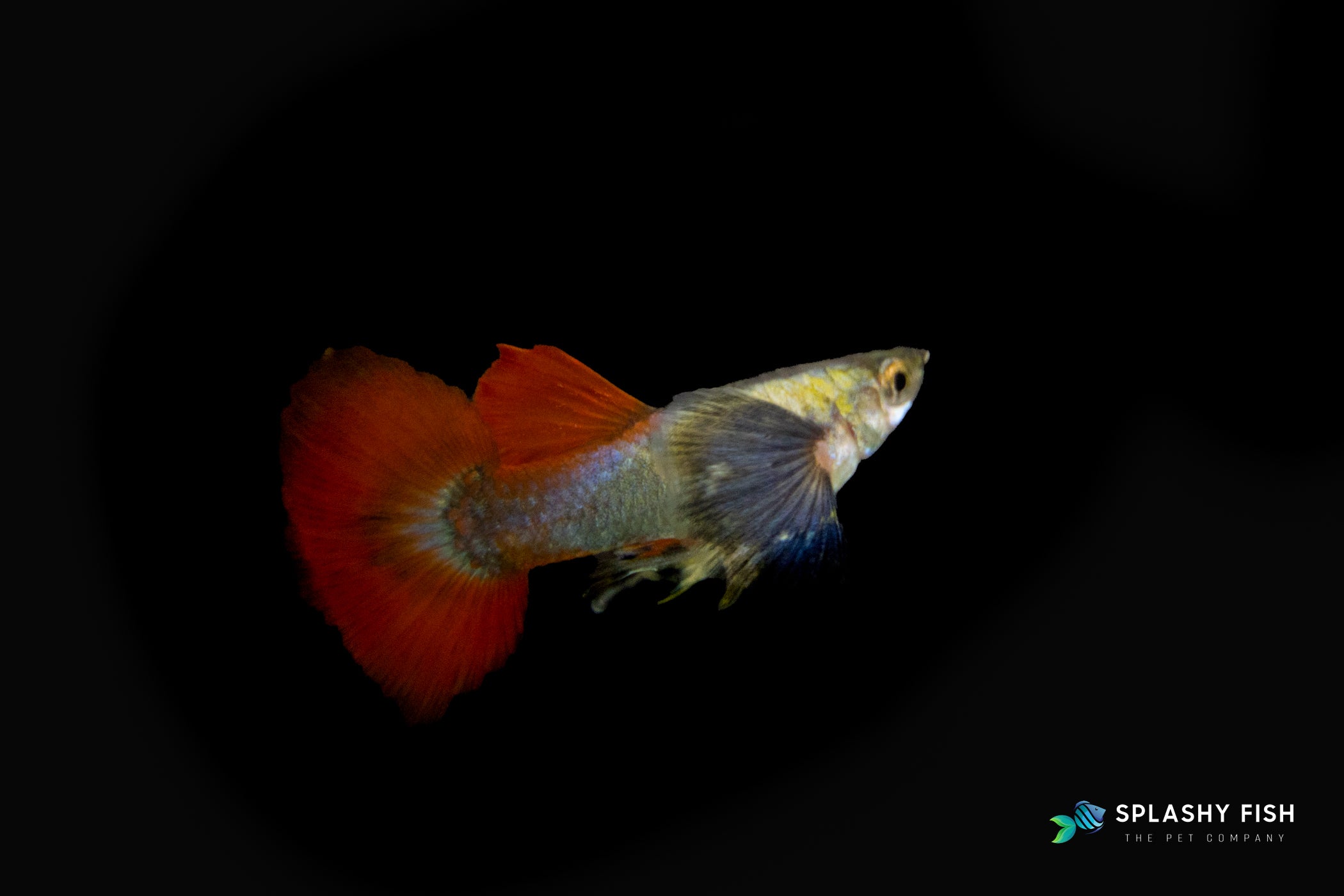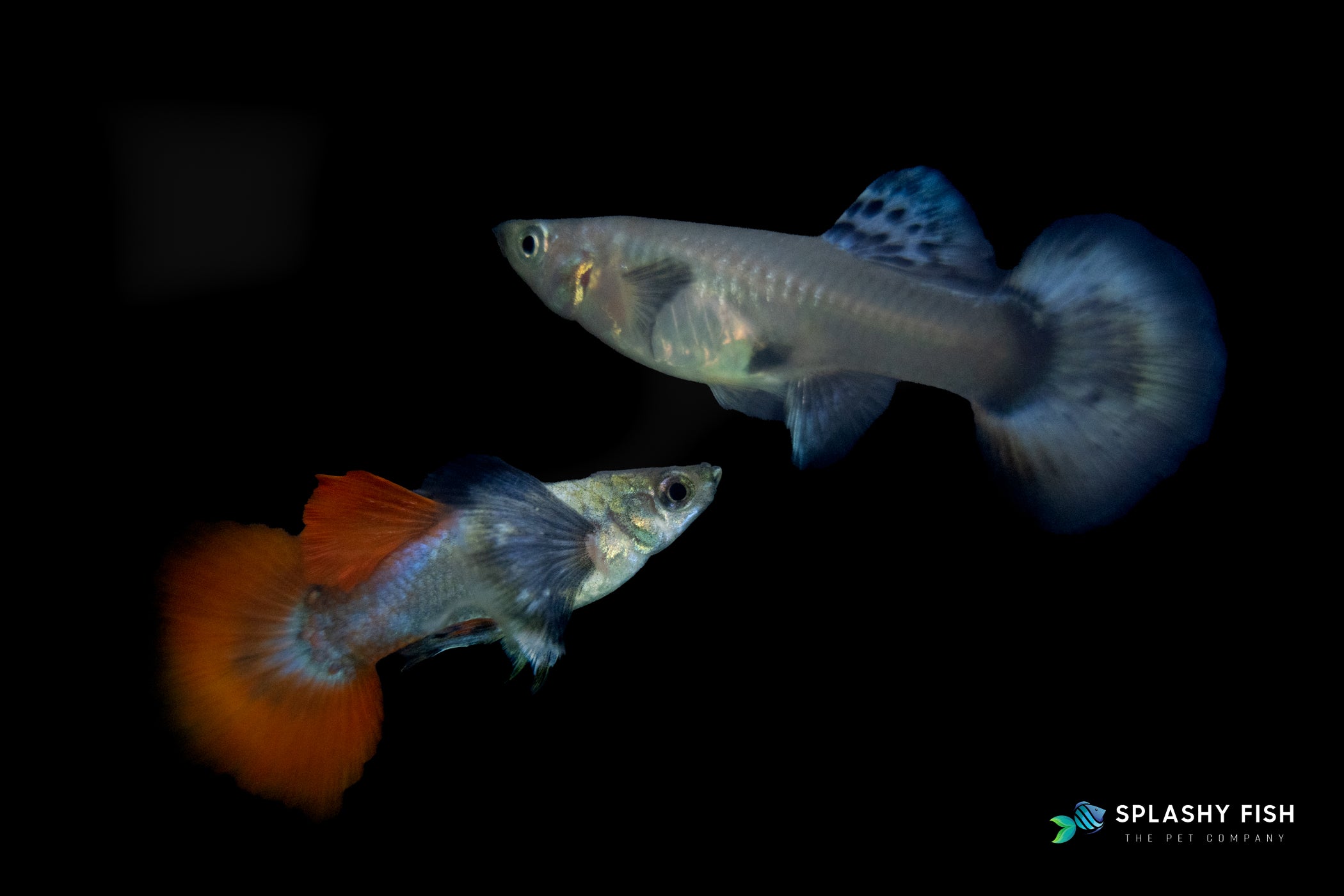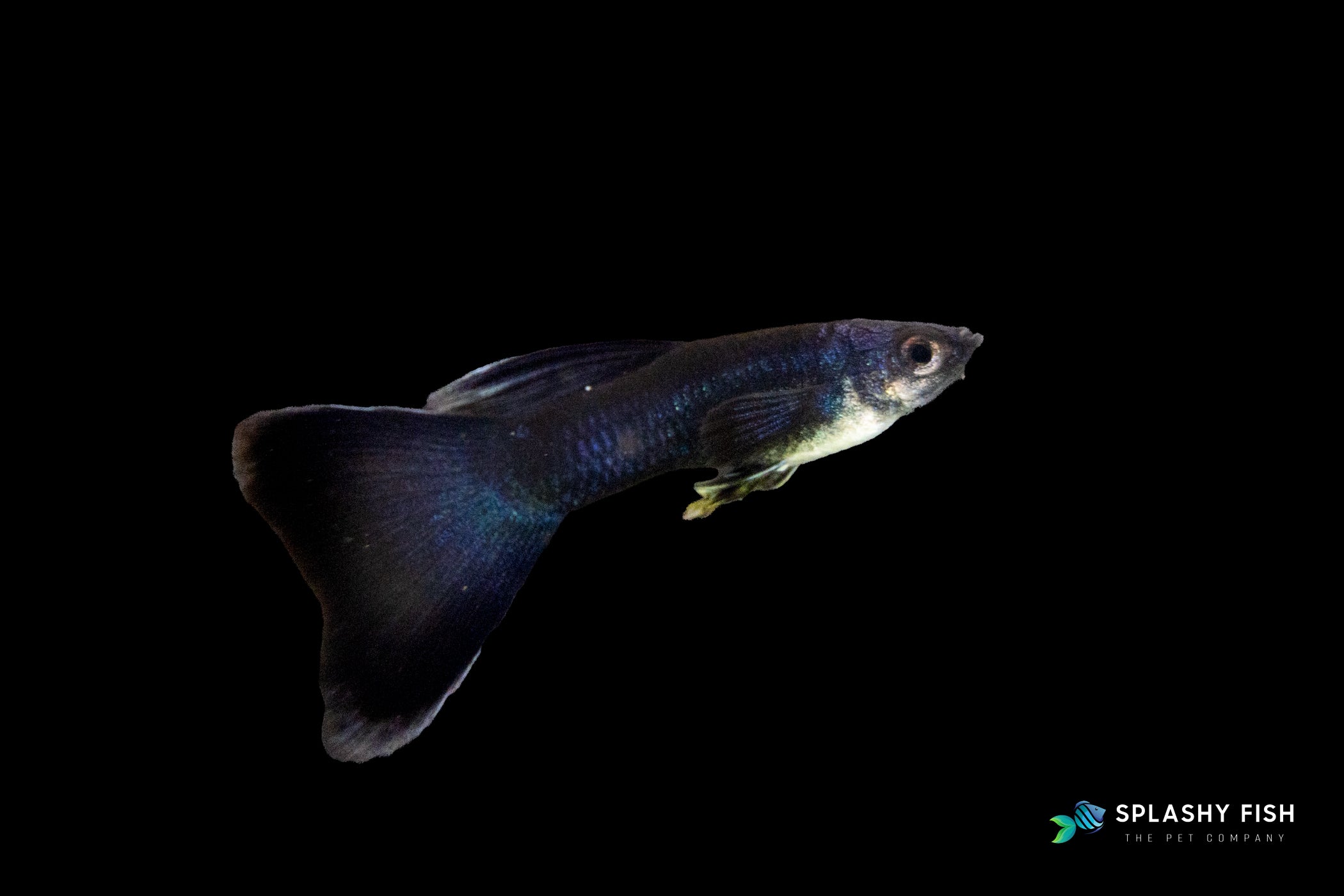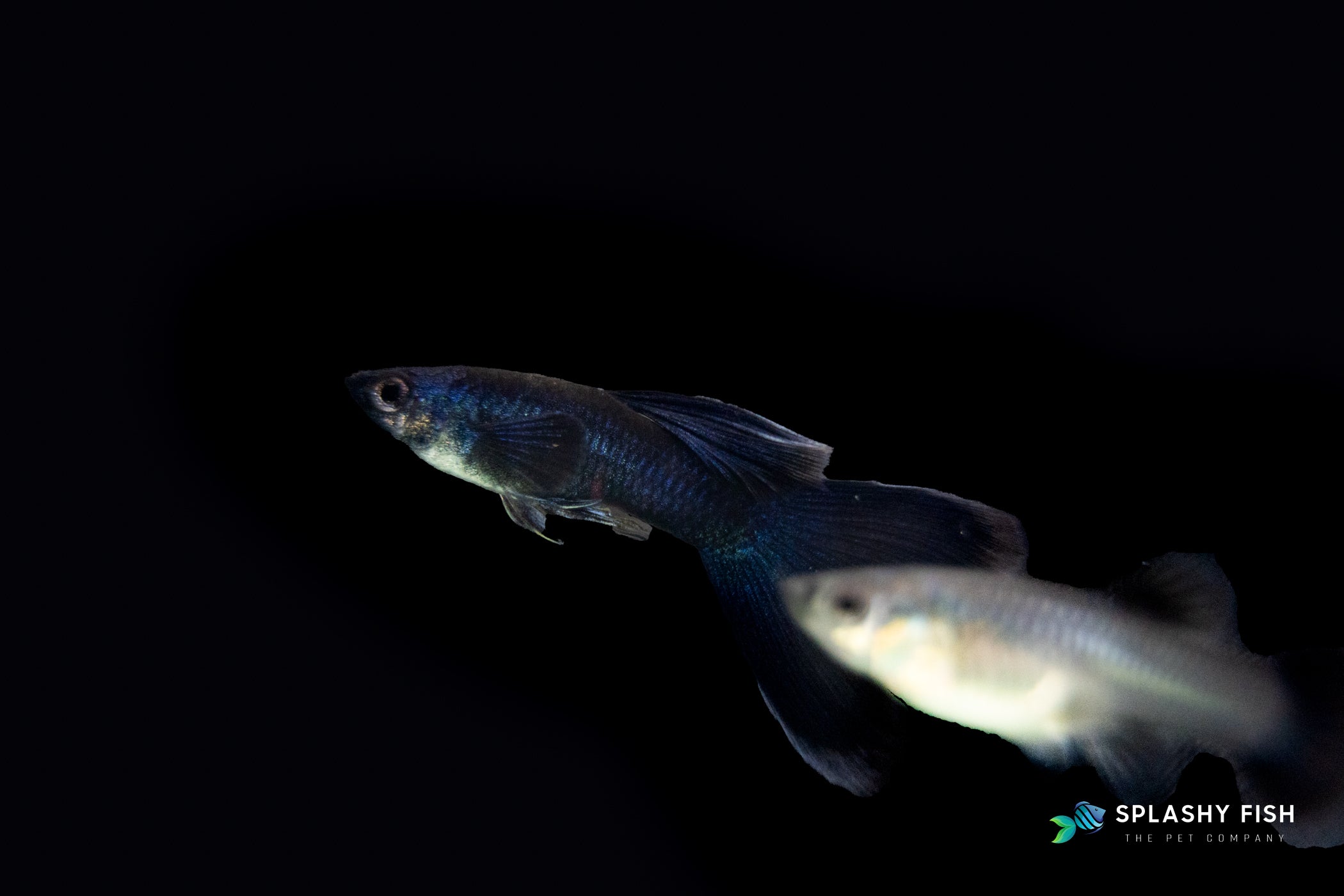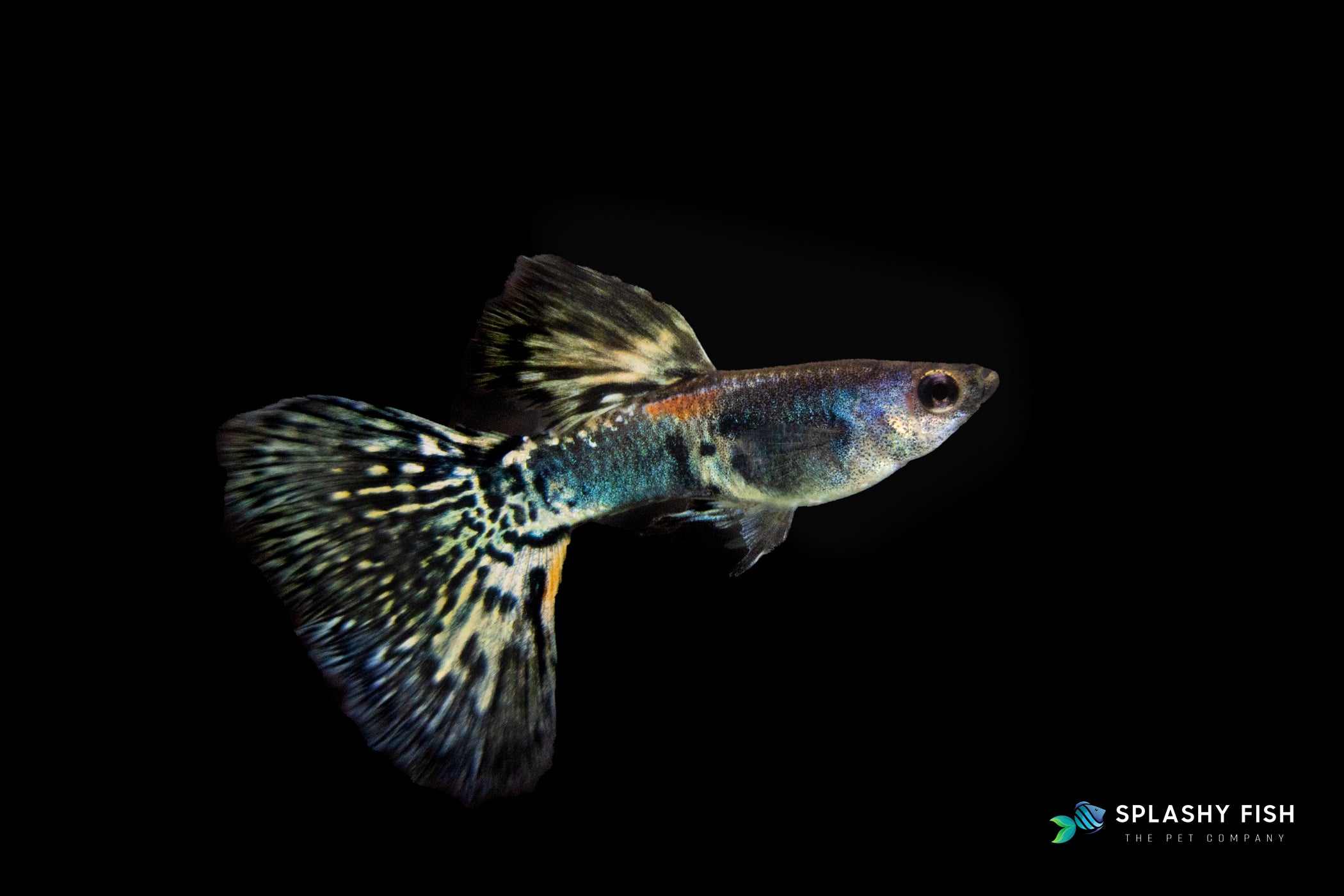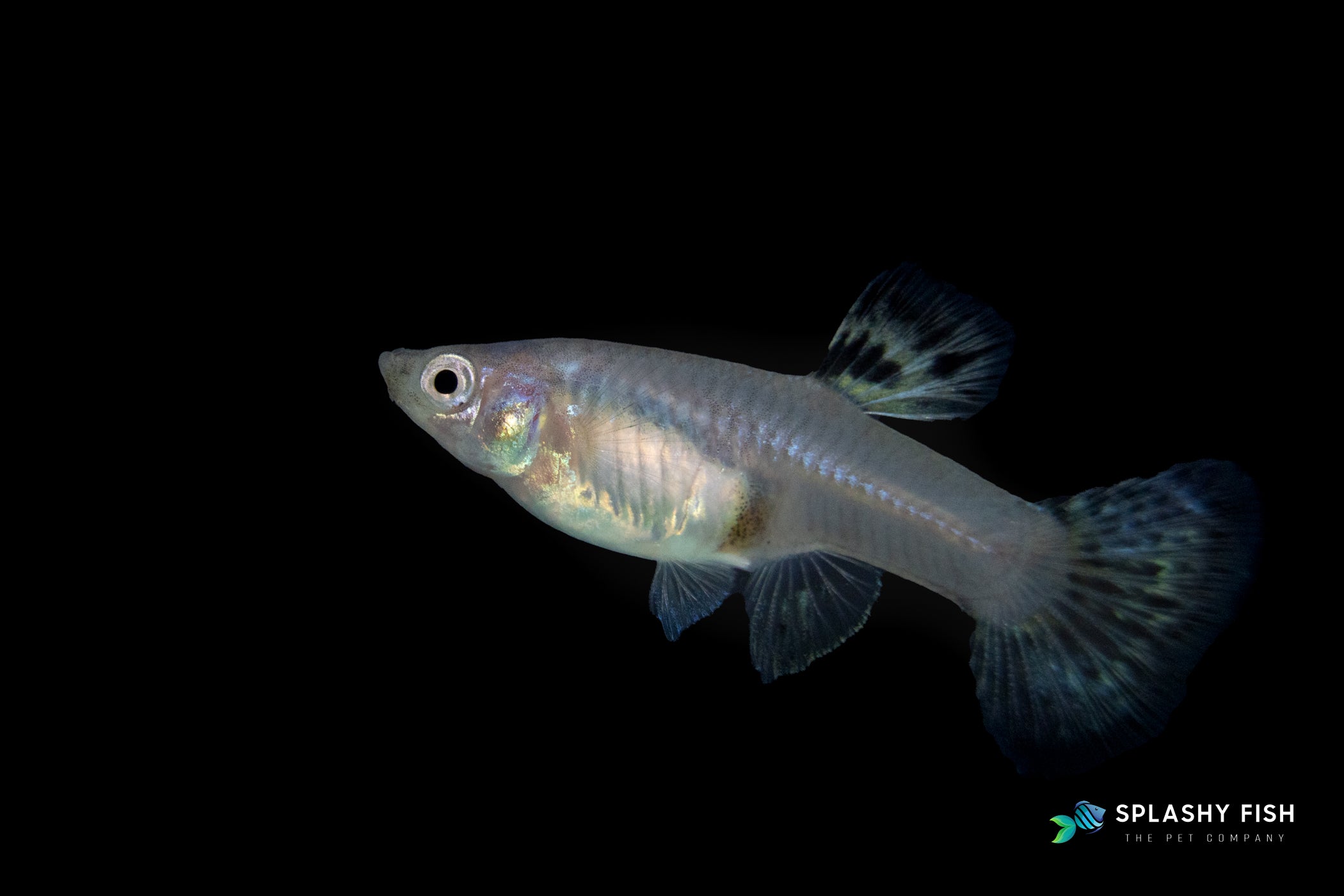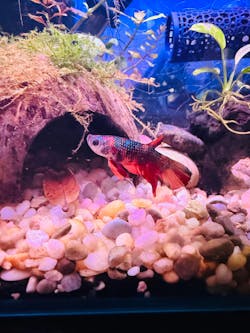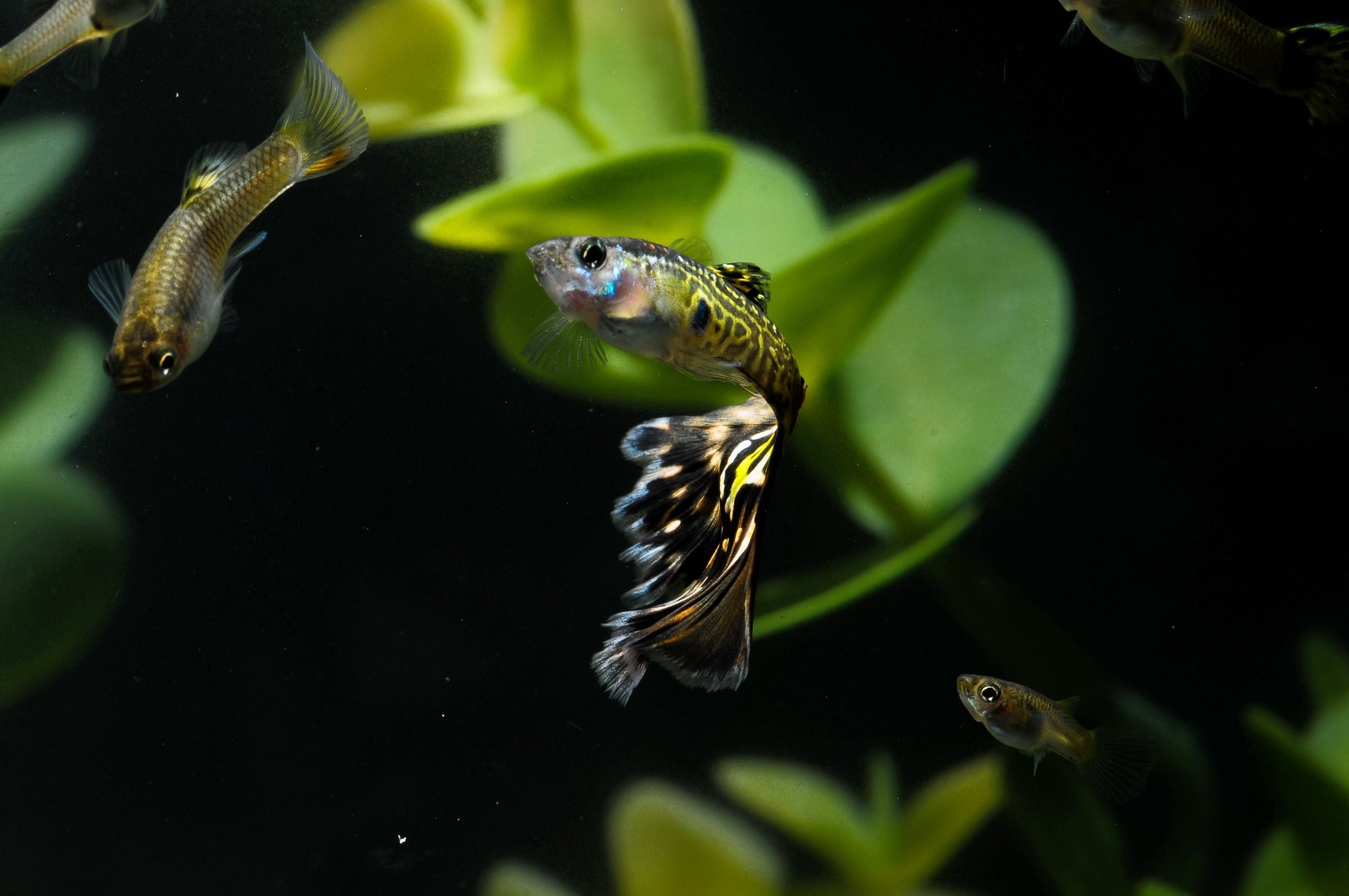
Fancy Guppies Fish For Sale
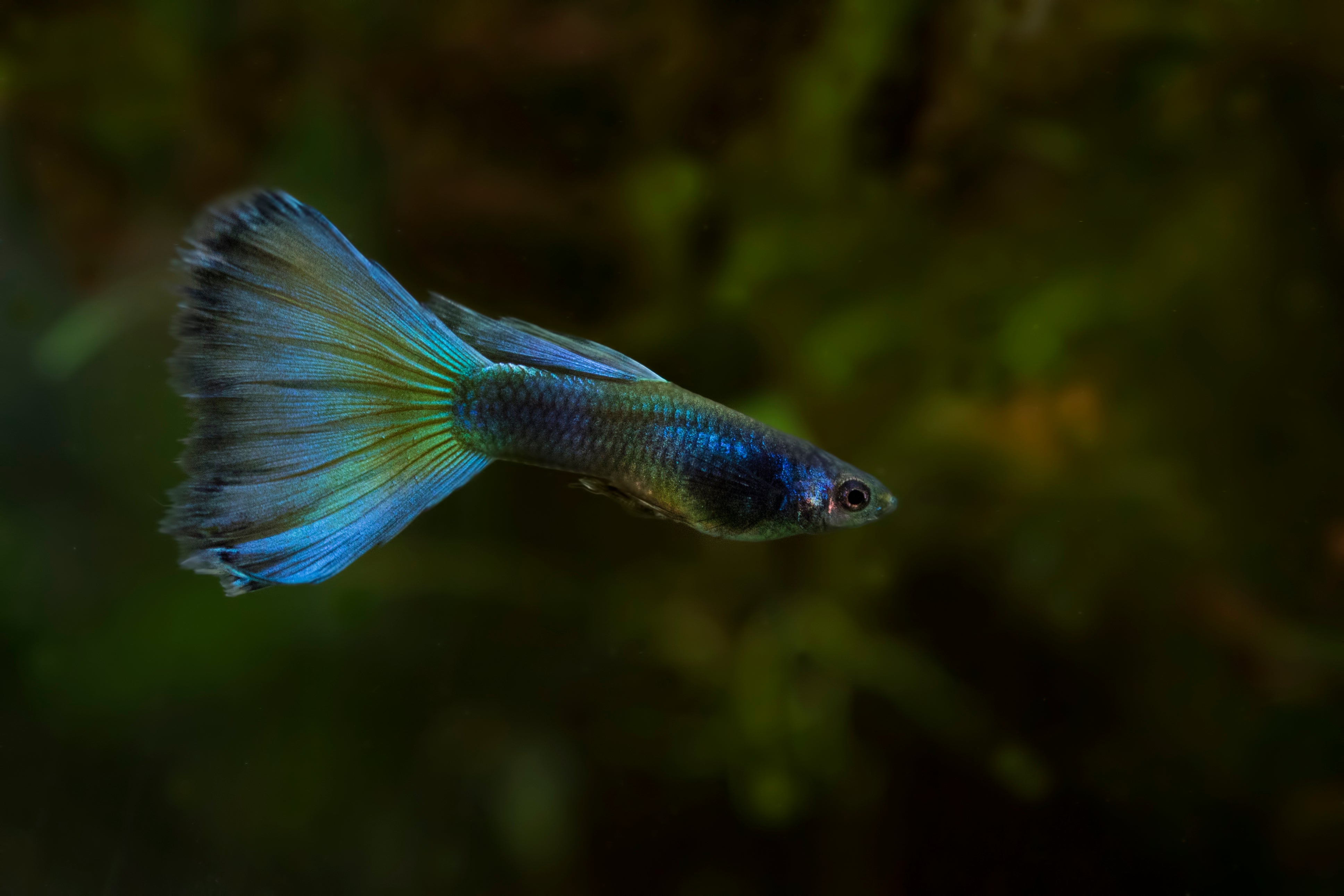
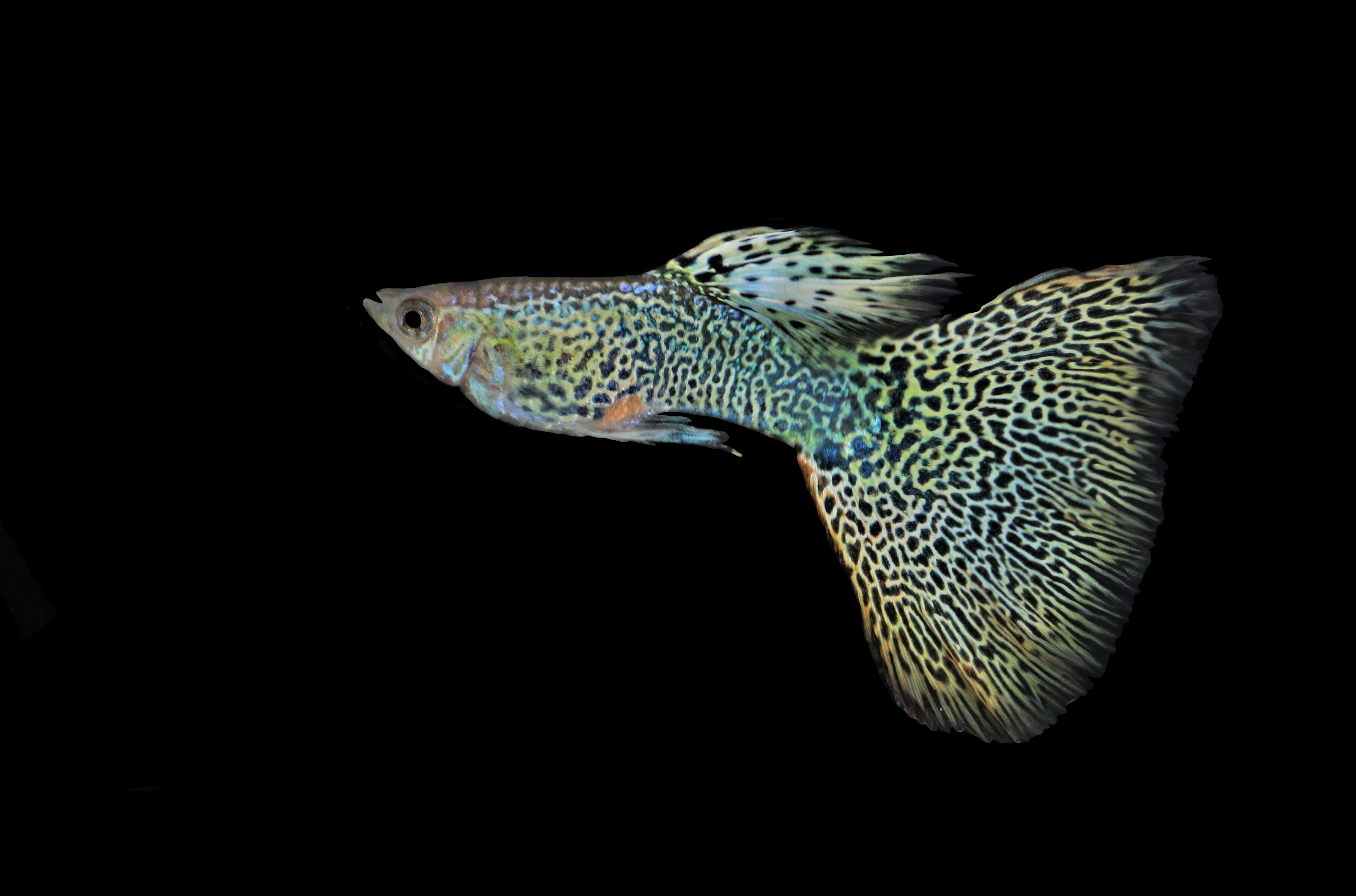
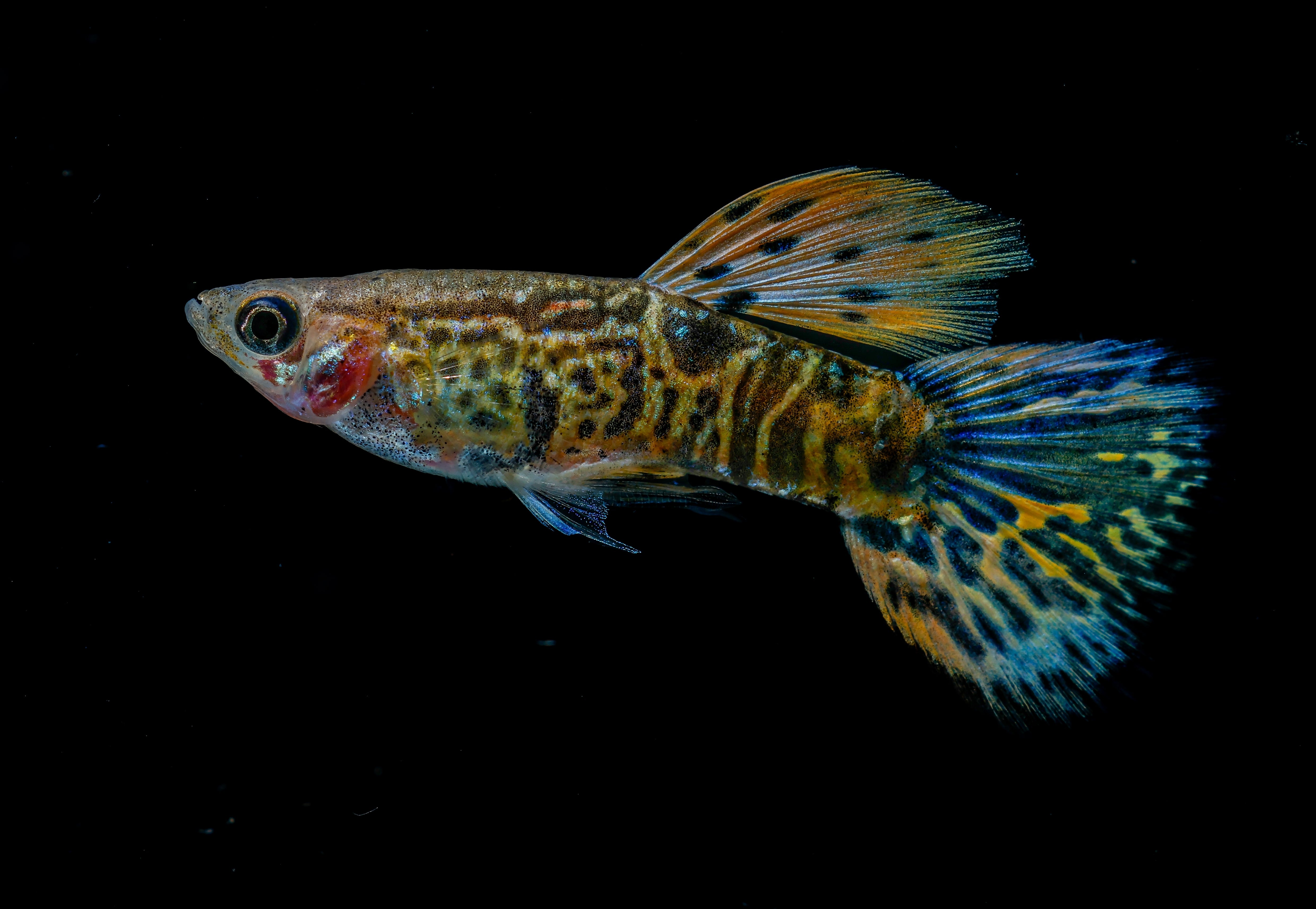
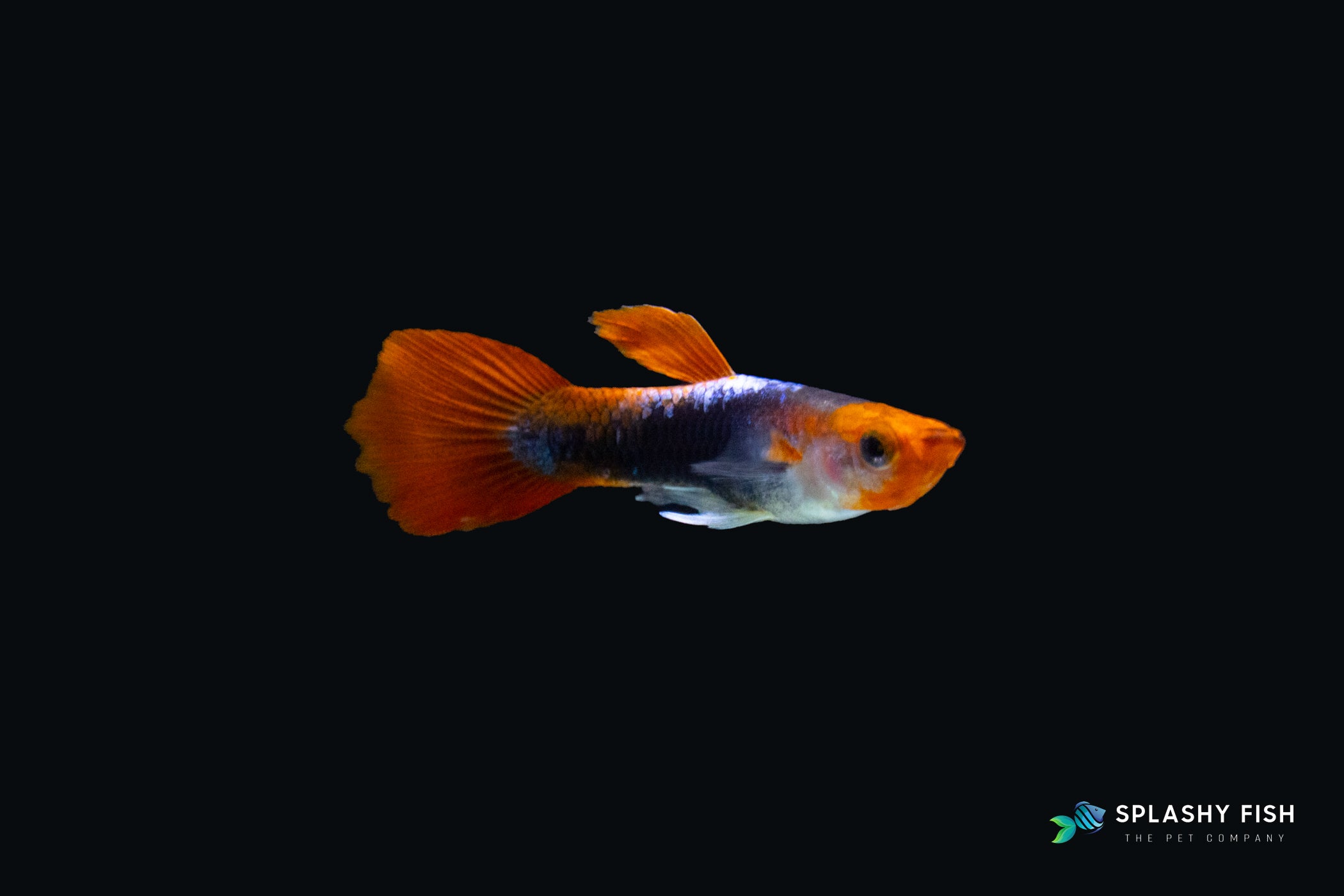
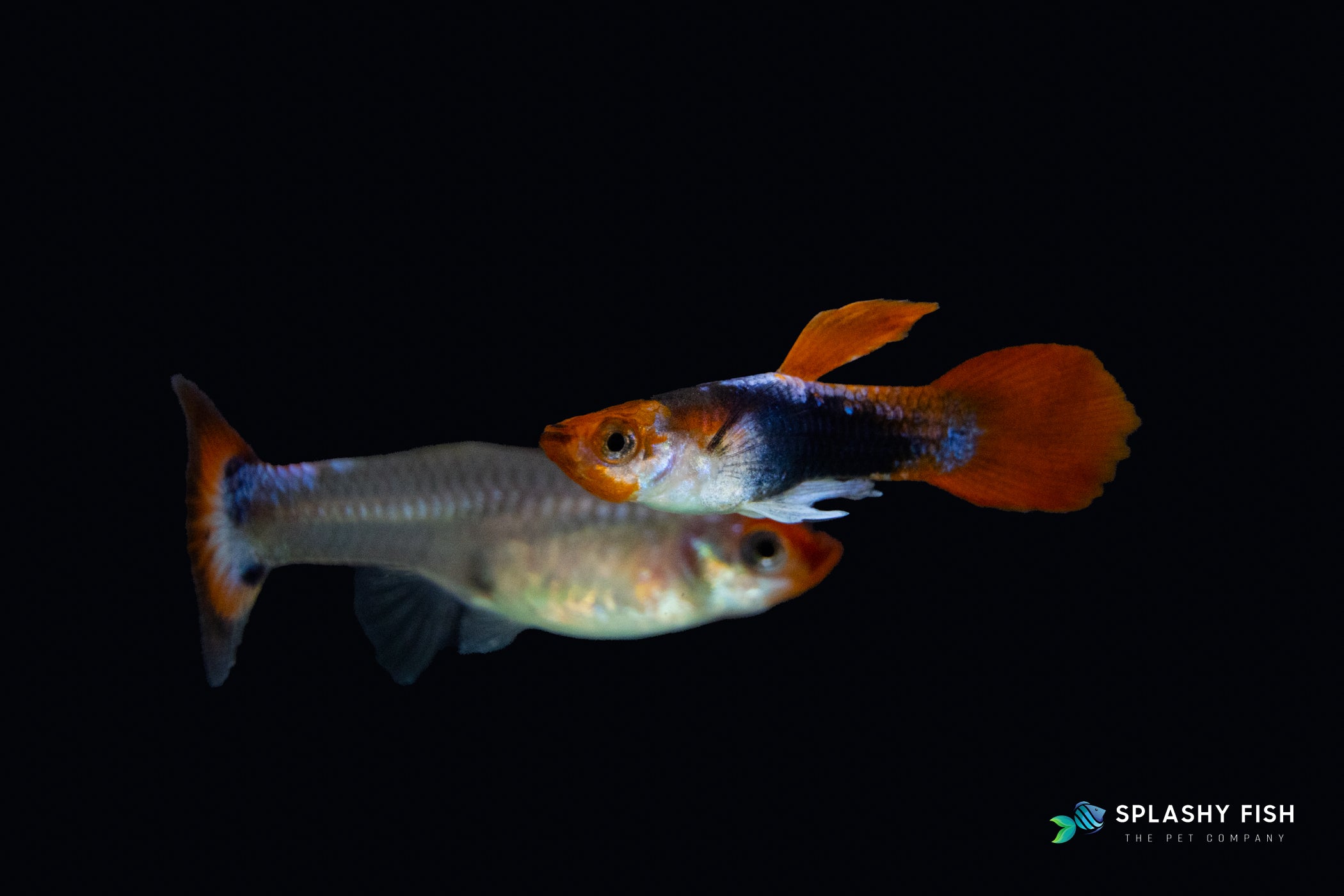
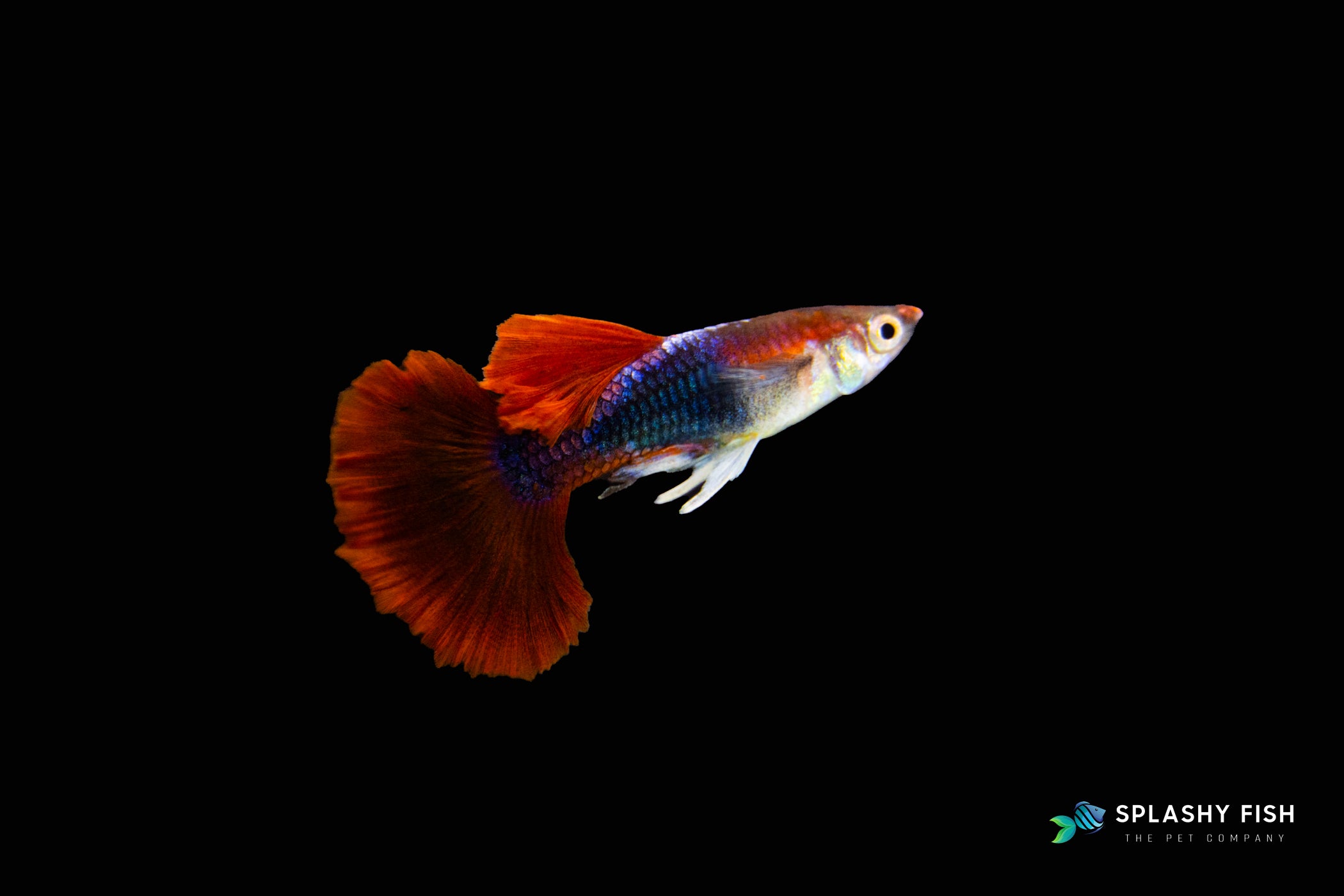
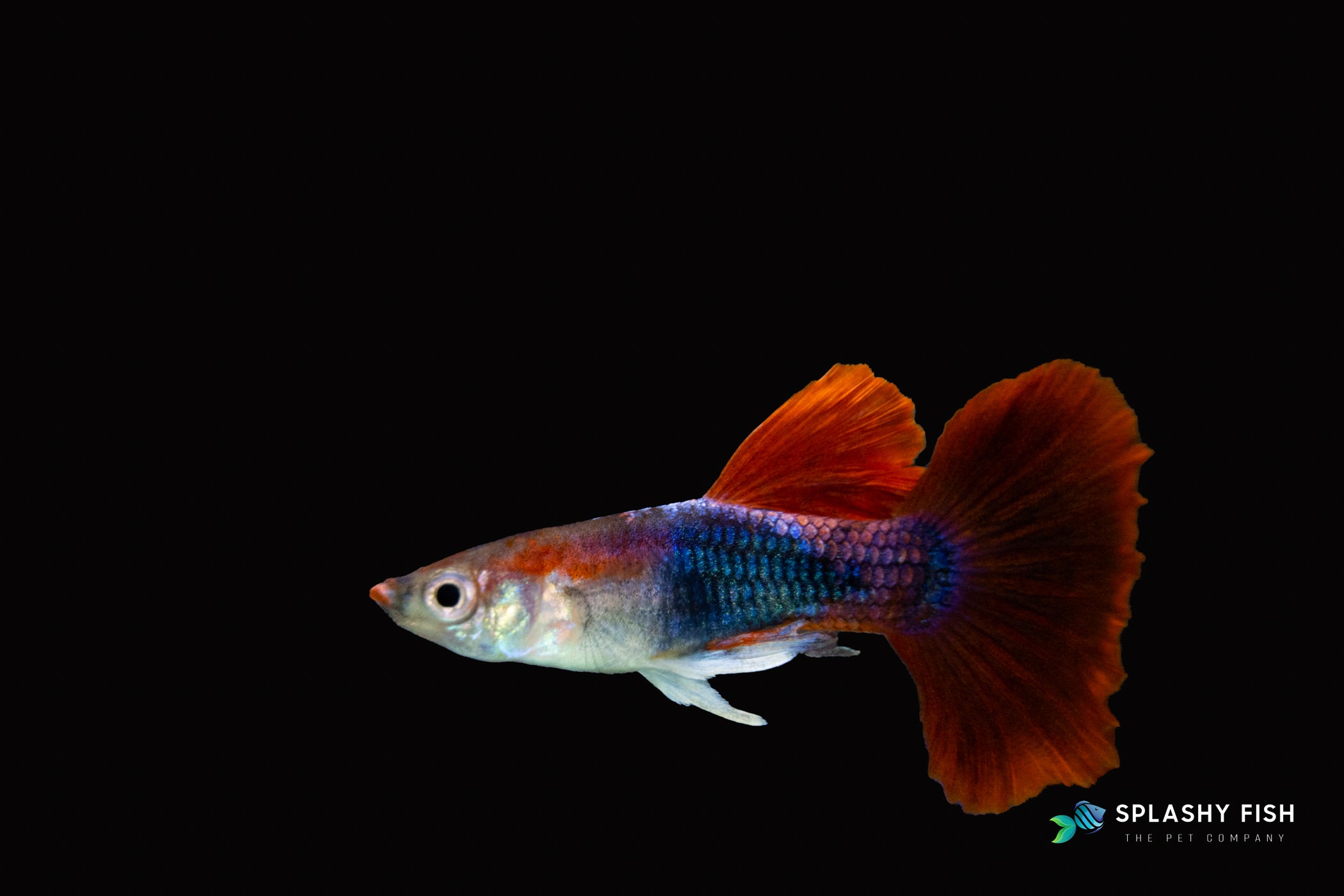
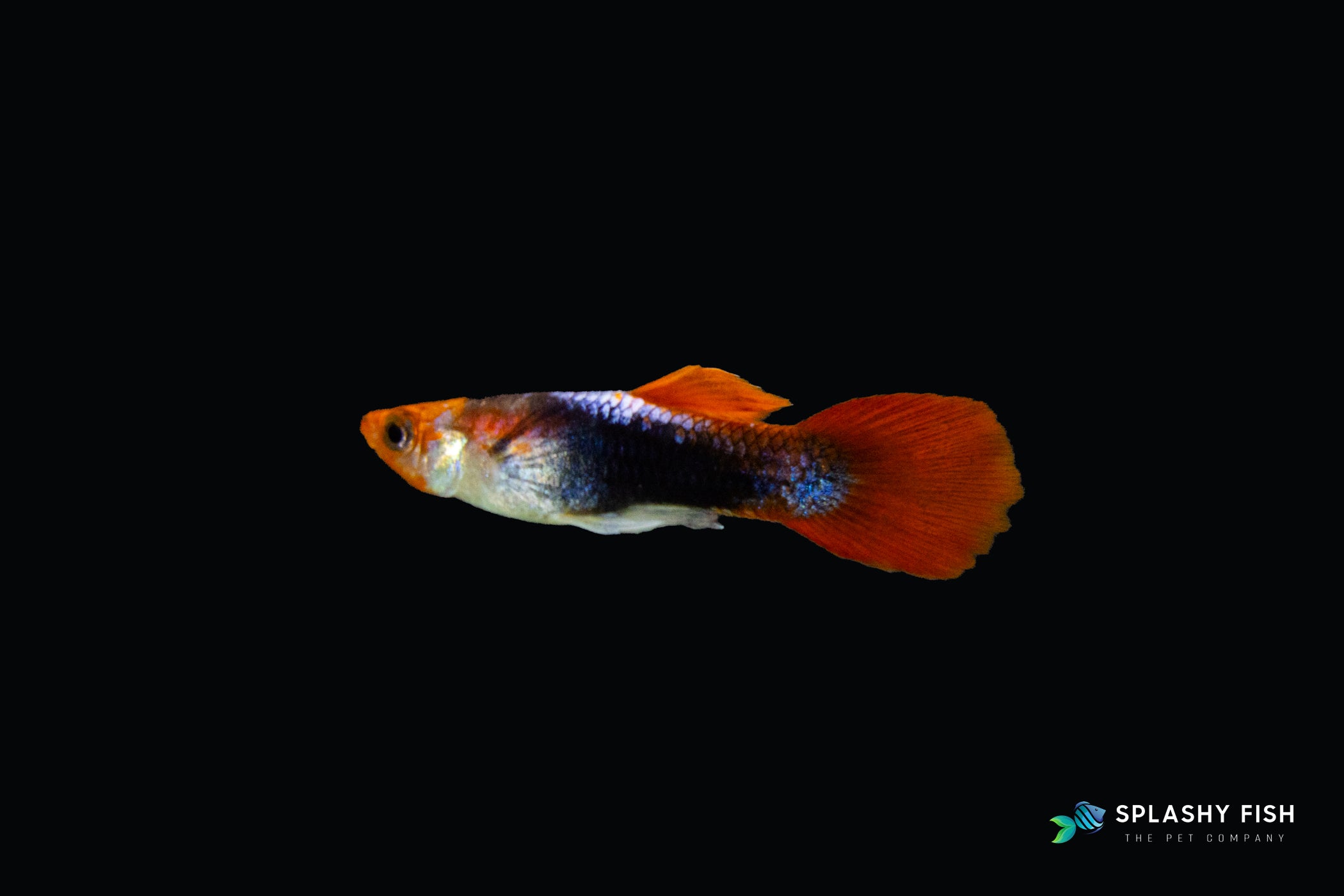
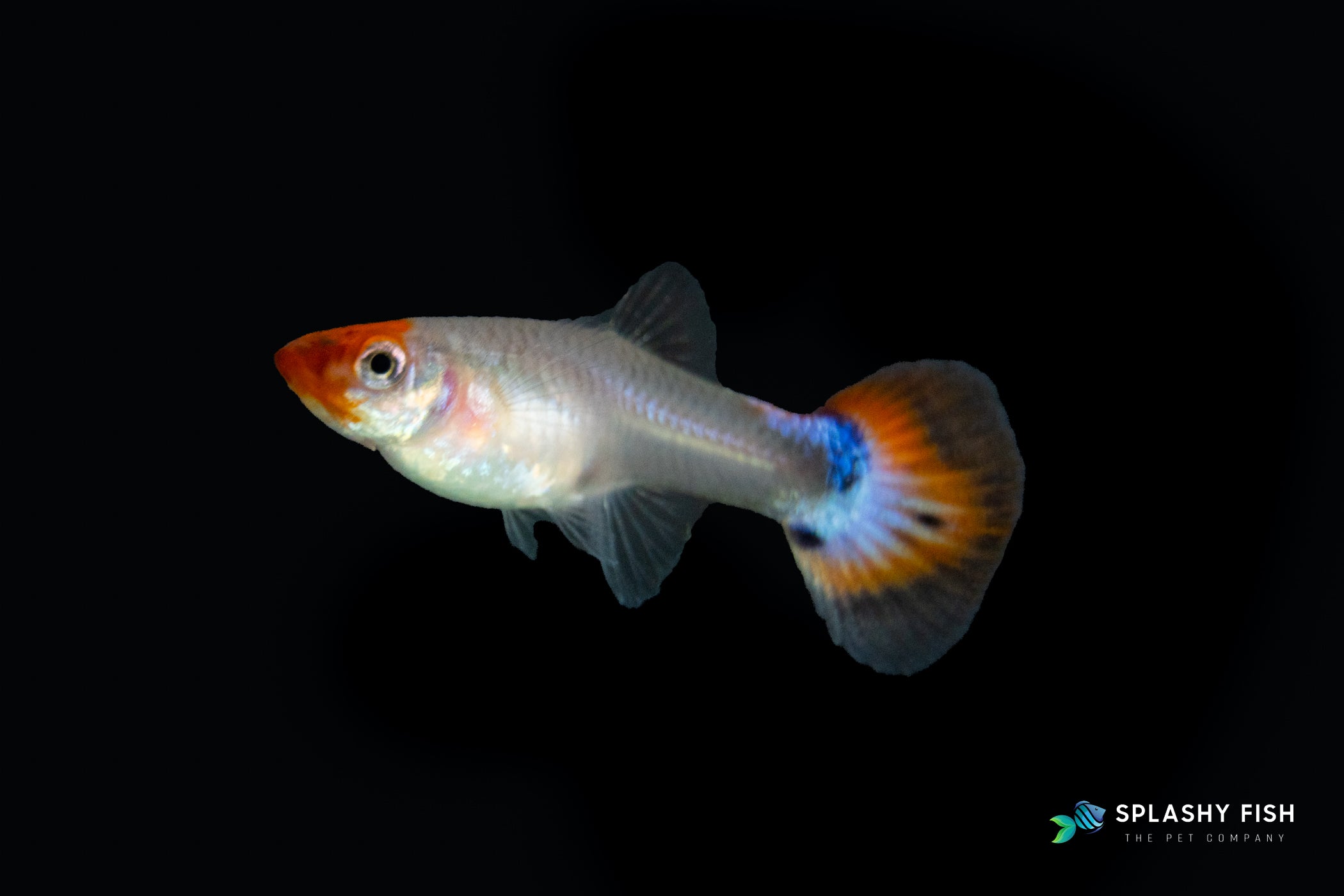
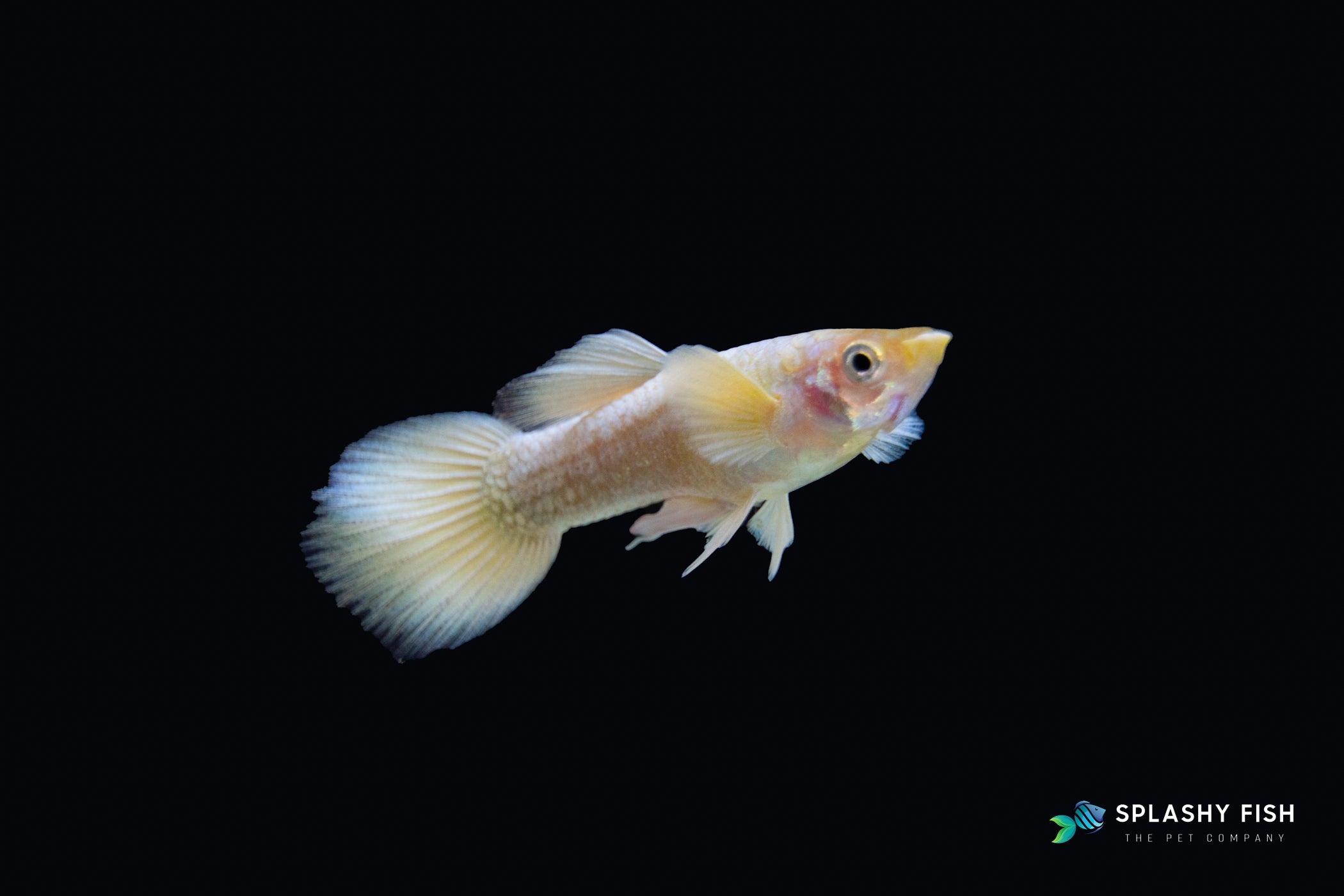
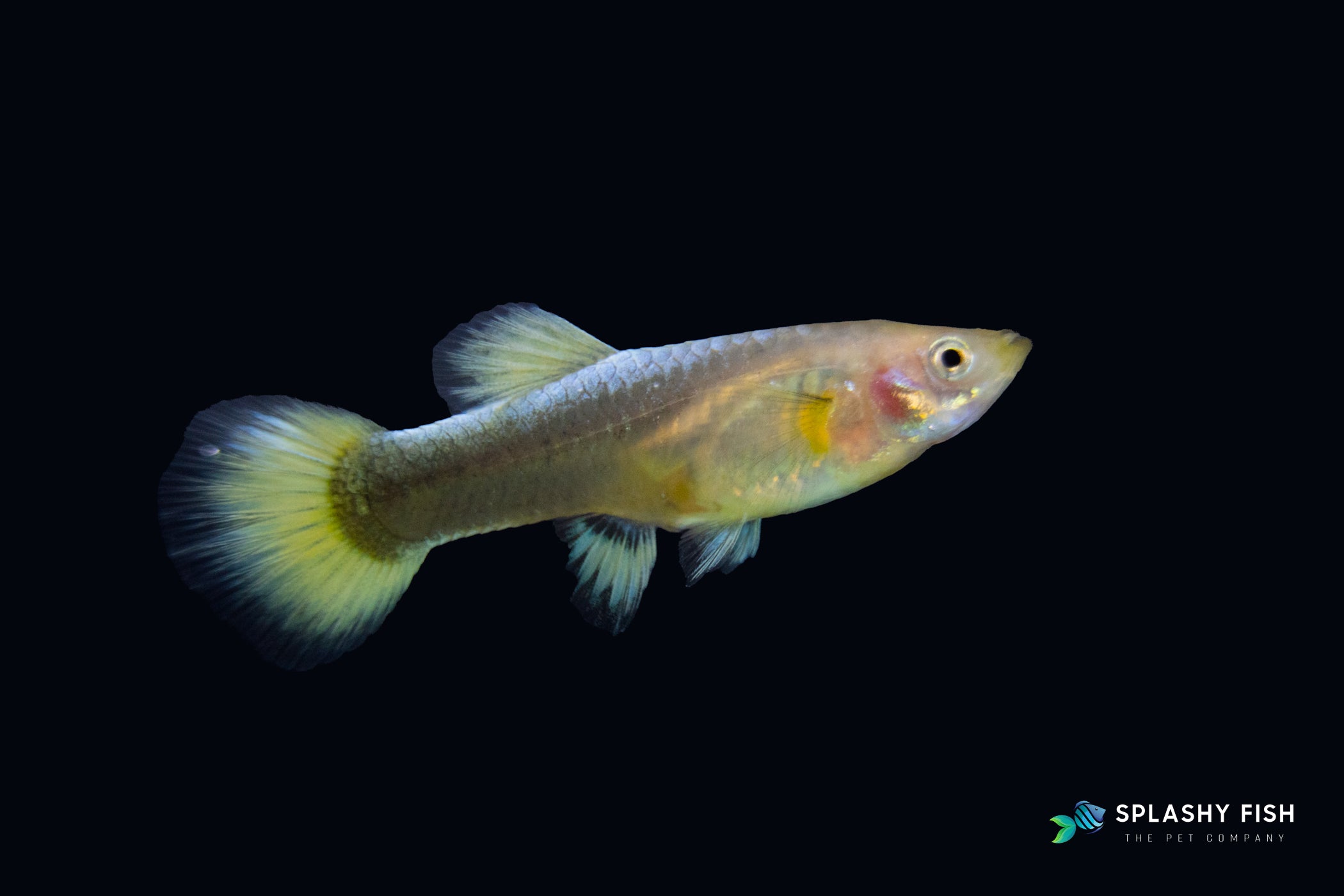
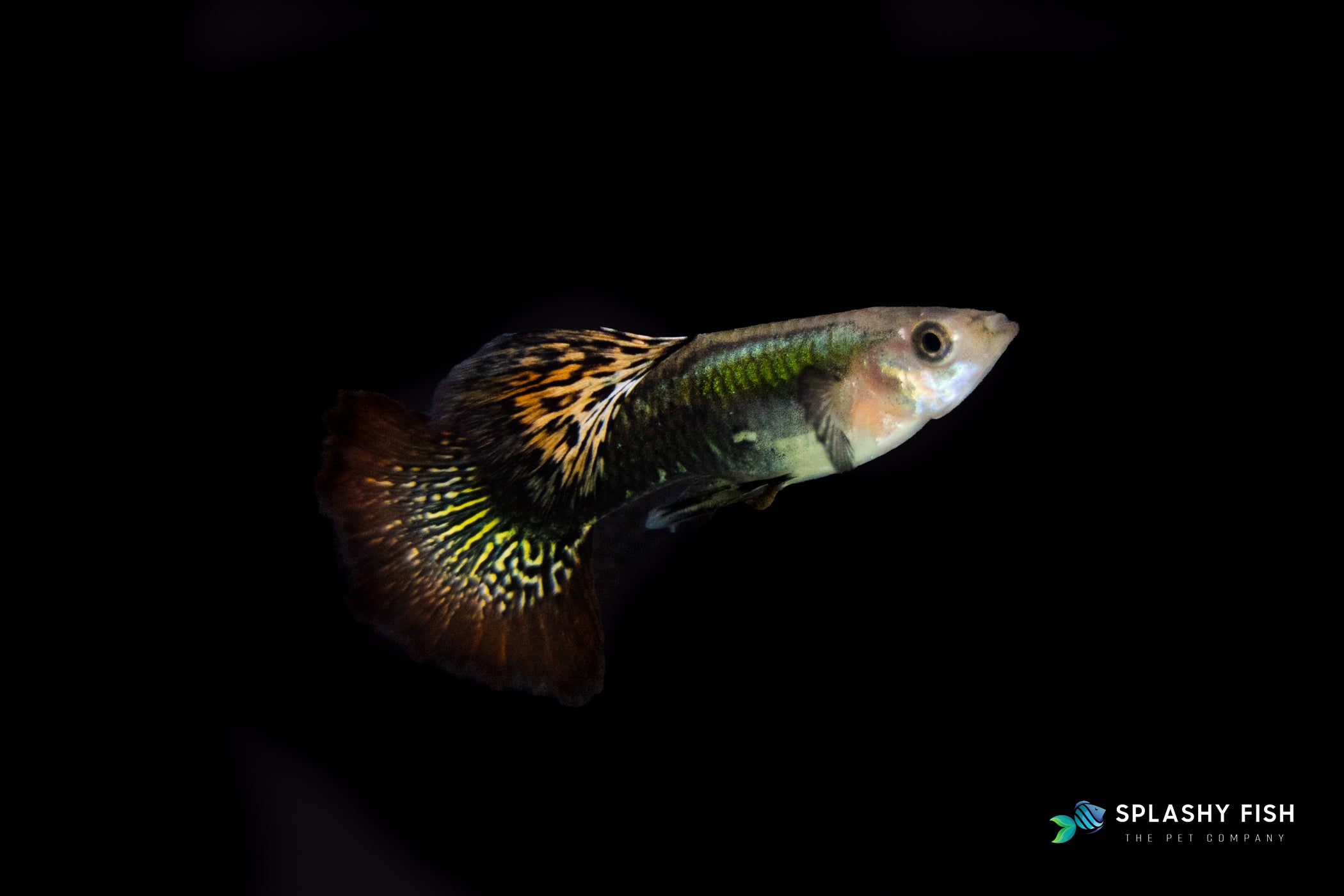
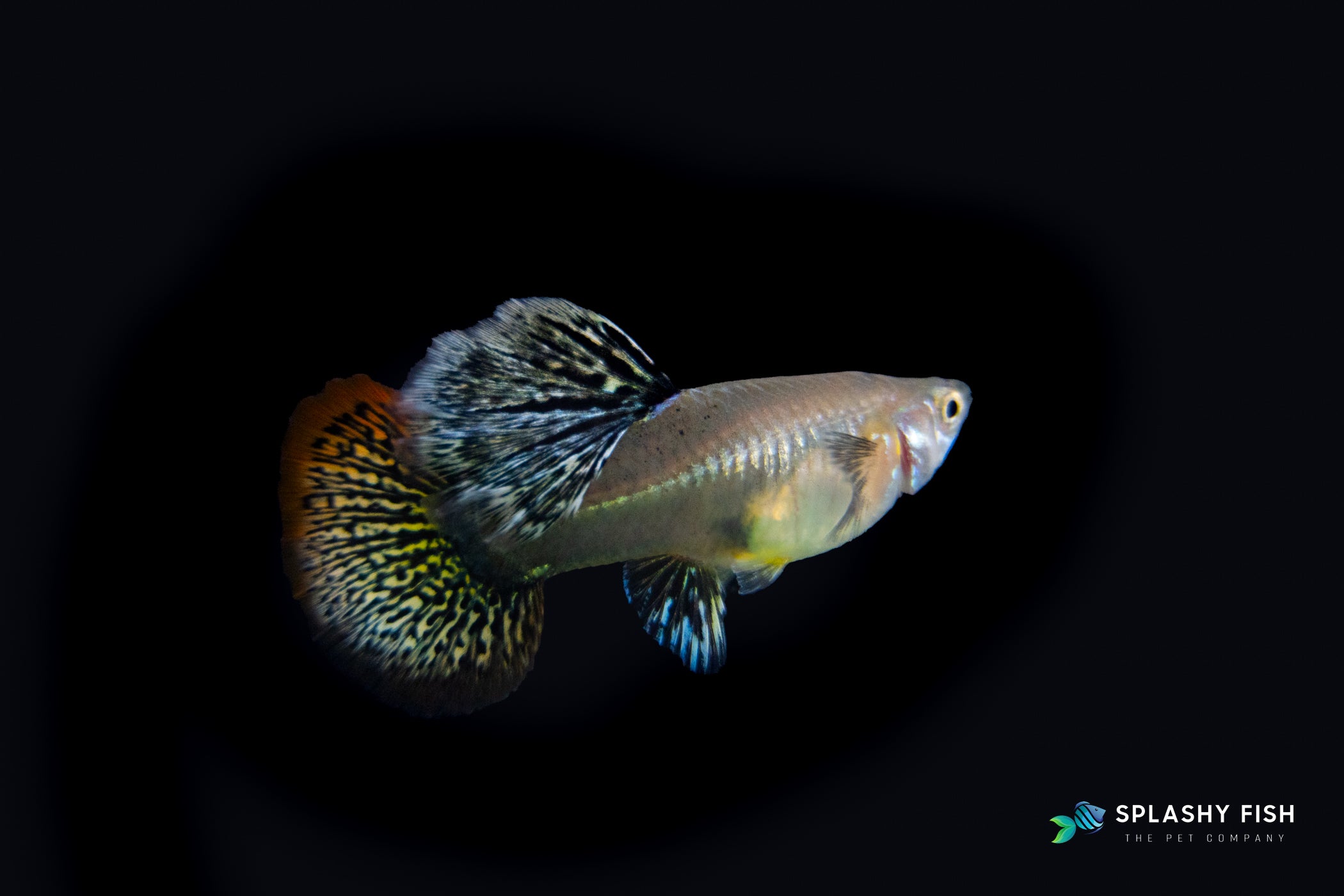
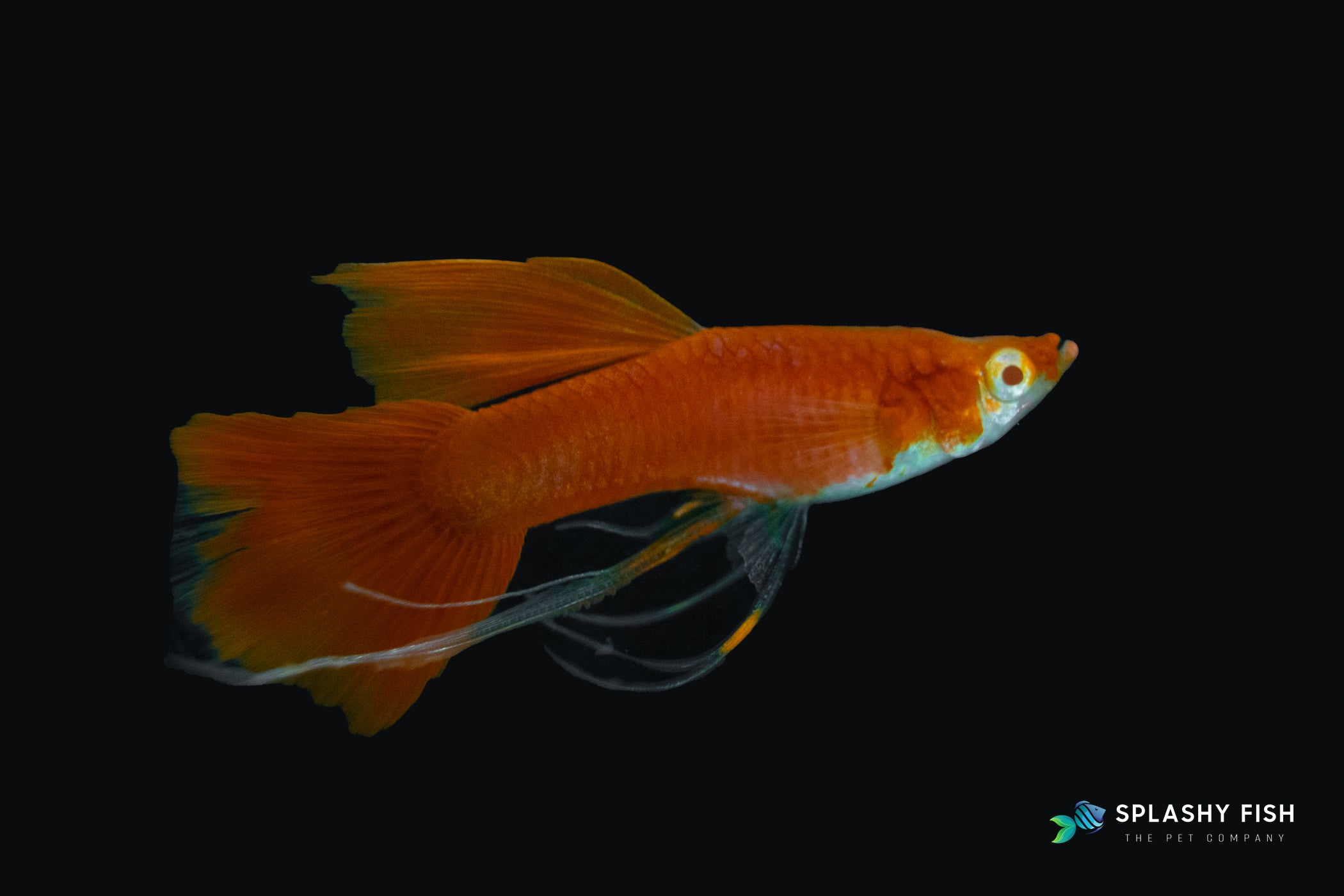
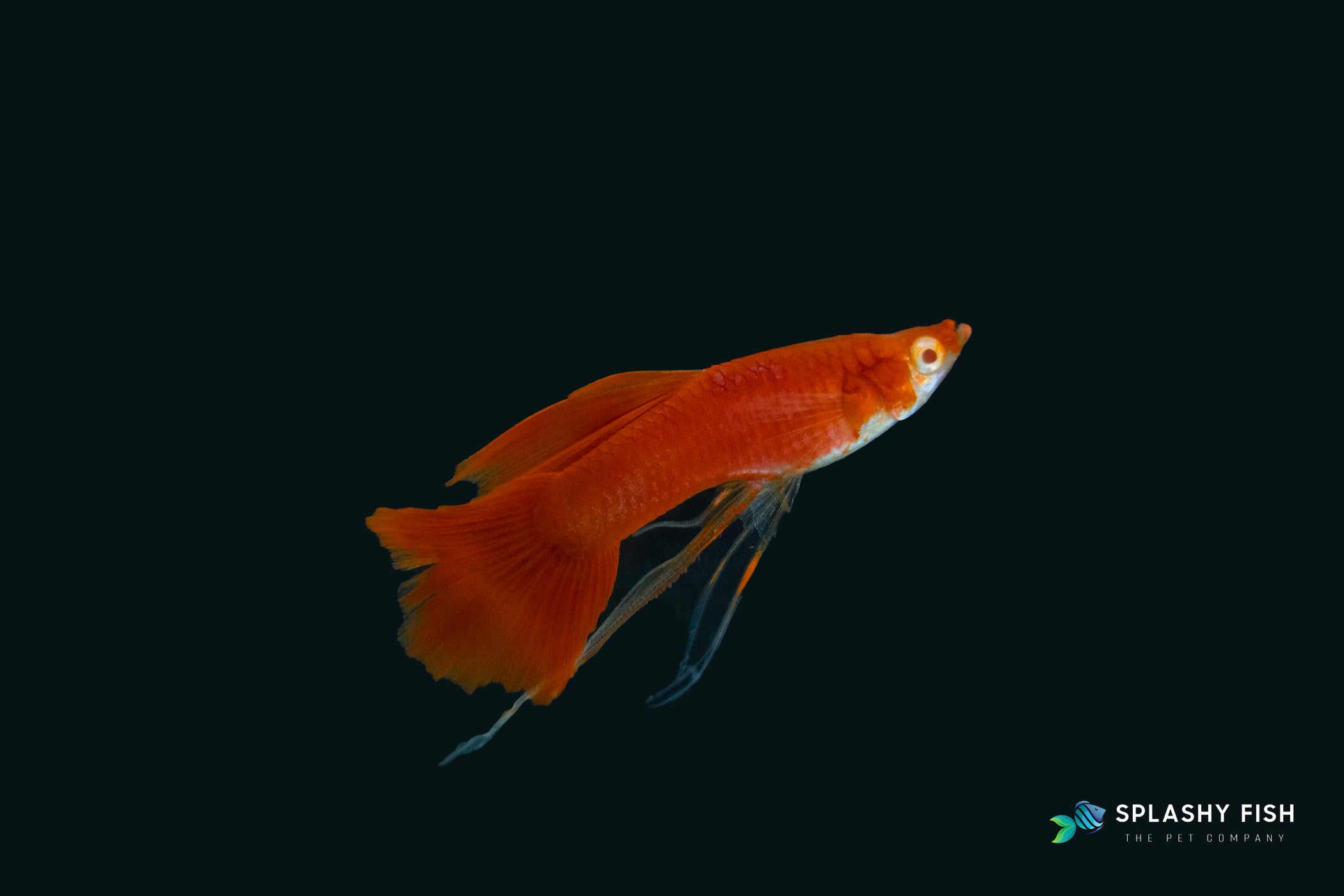
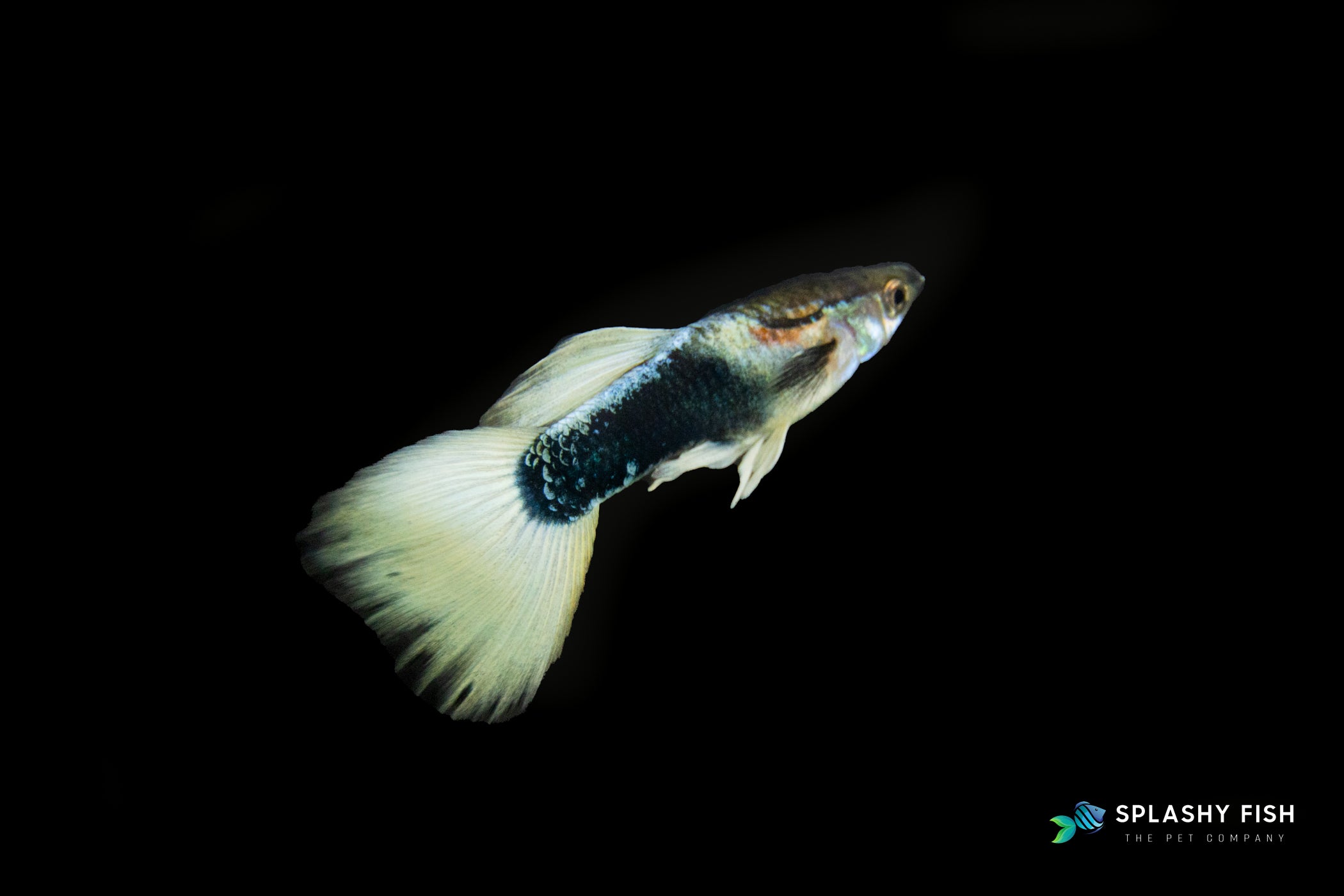
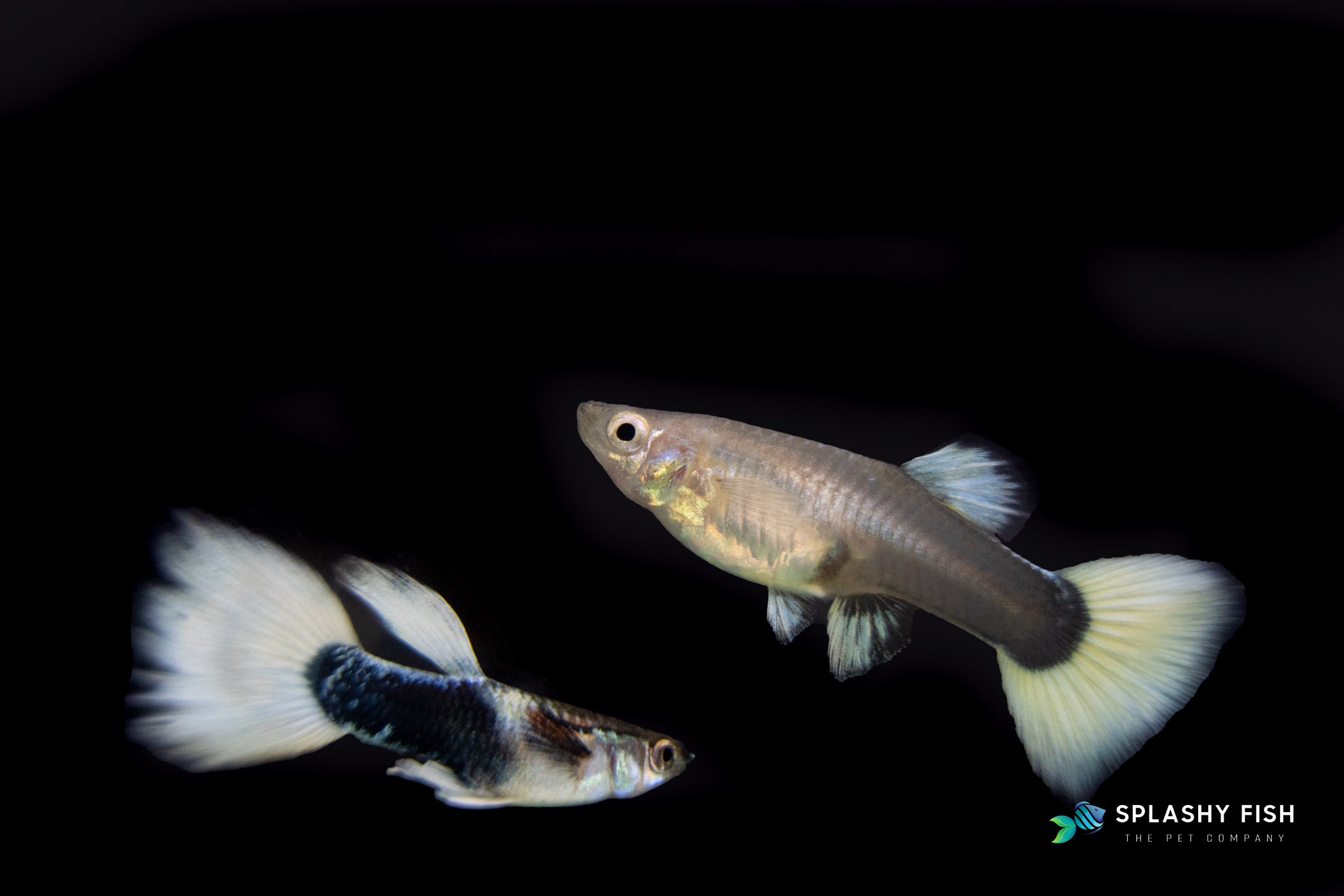
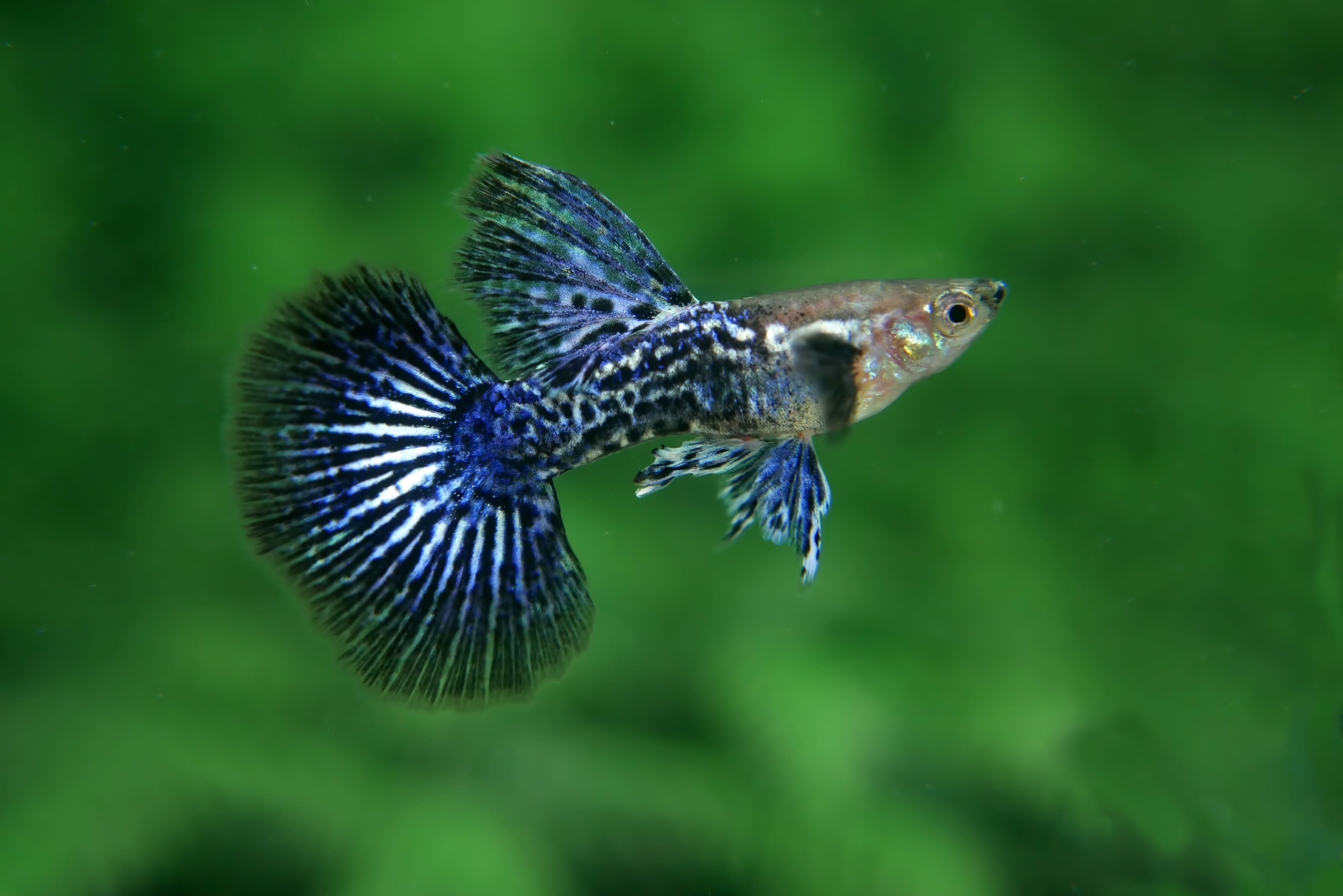
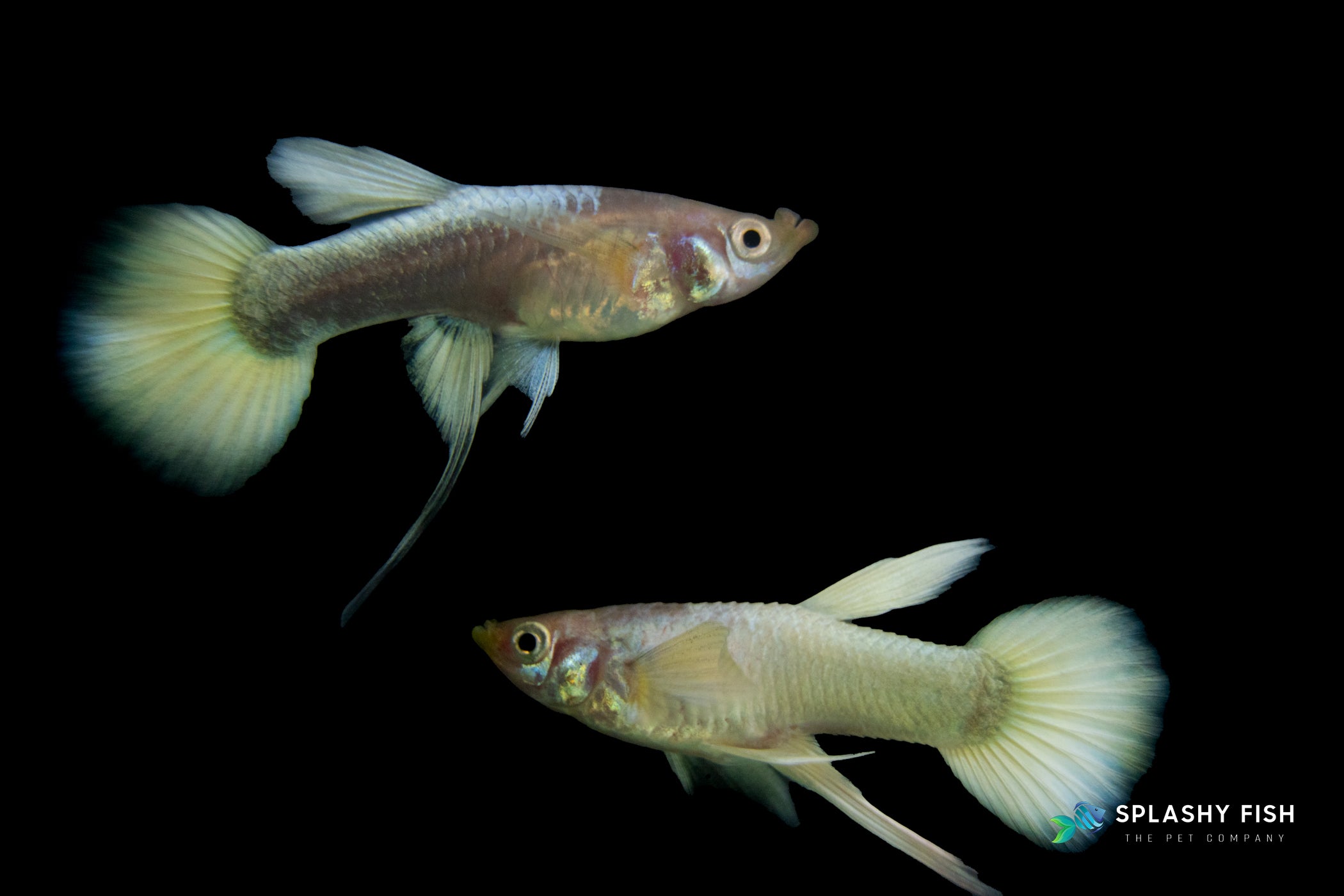
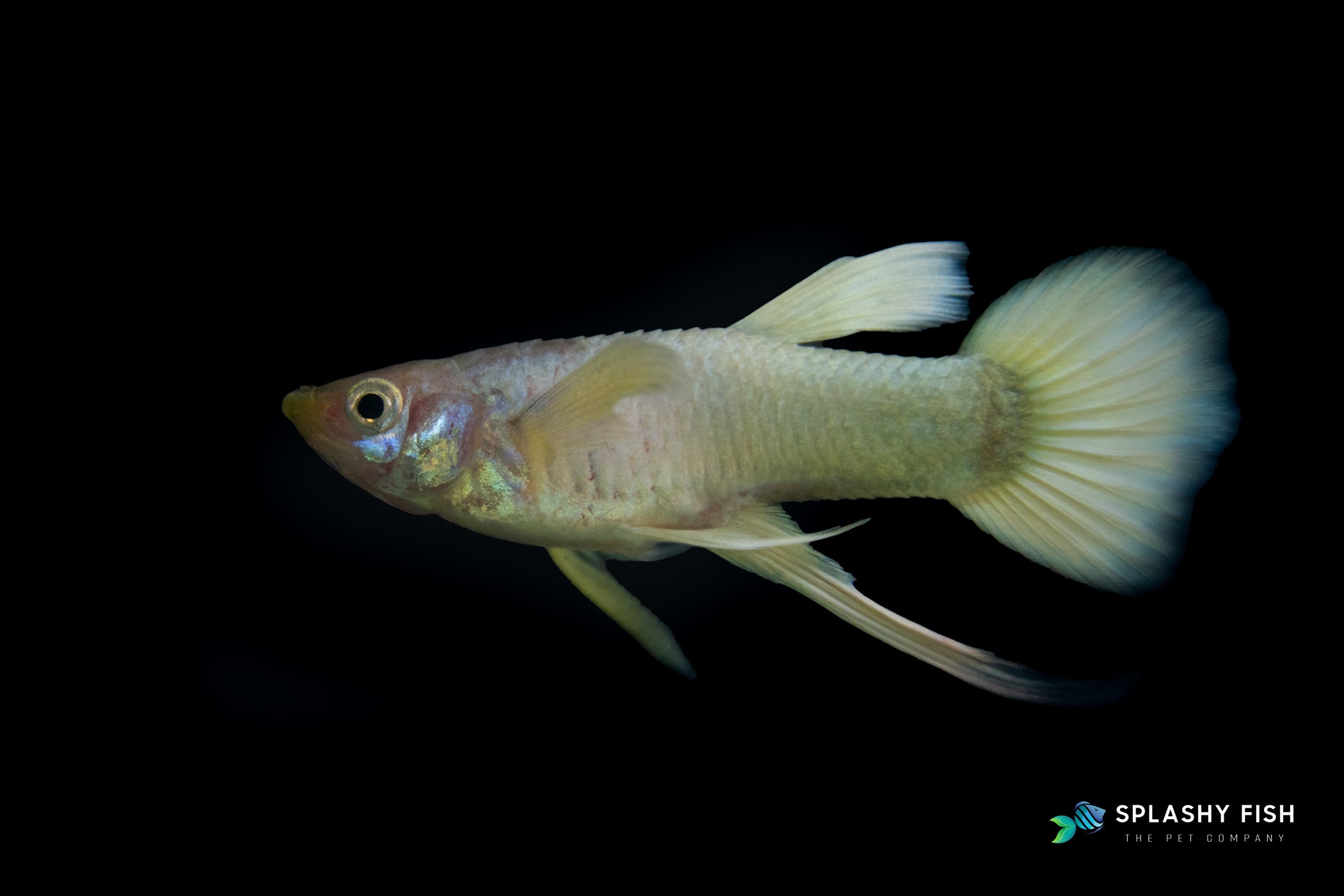
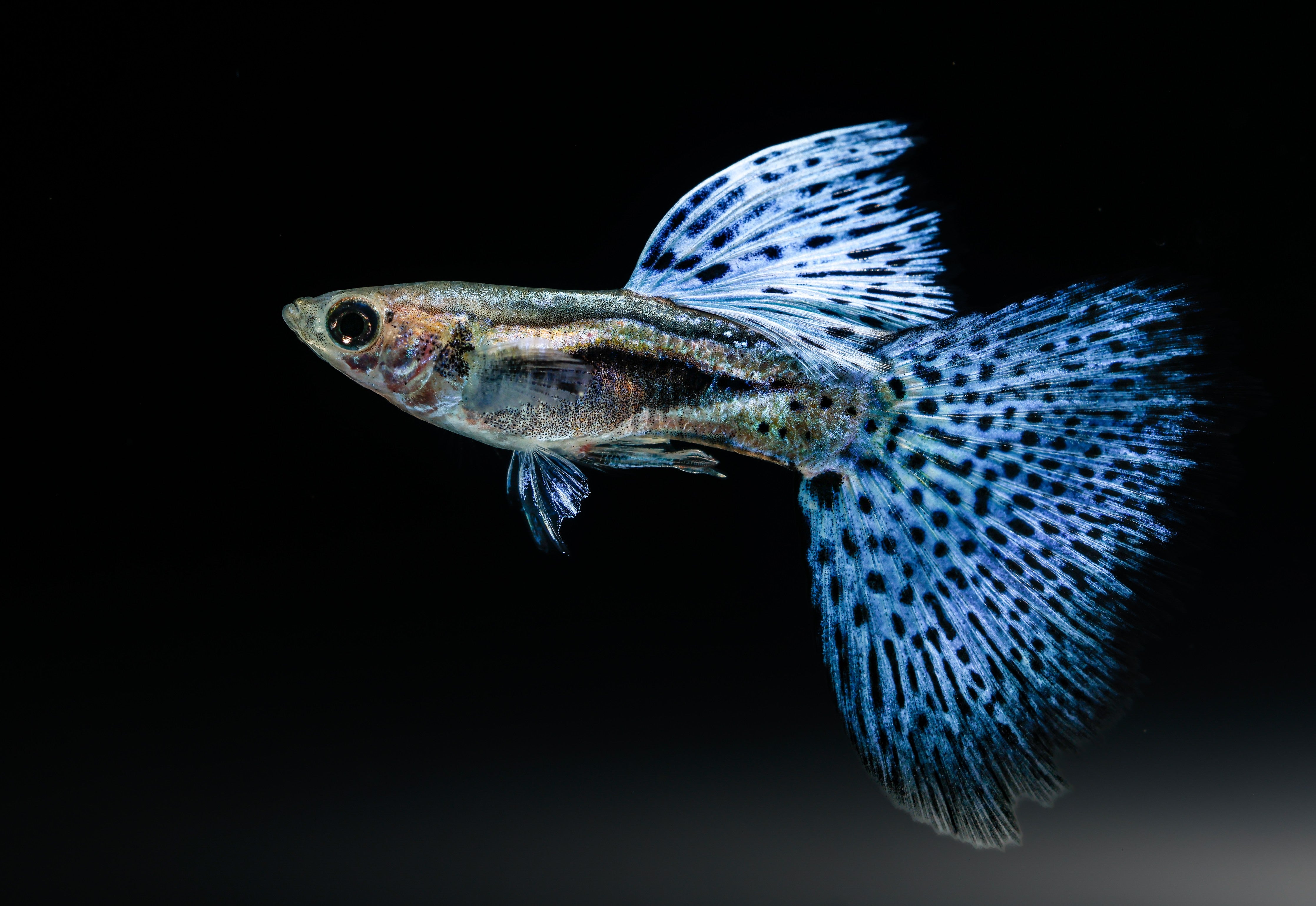
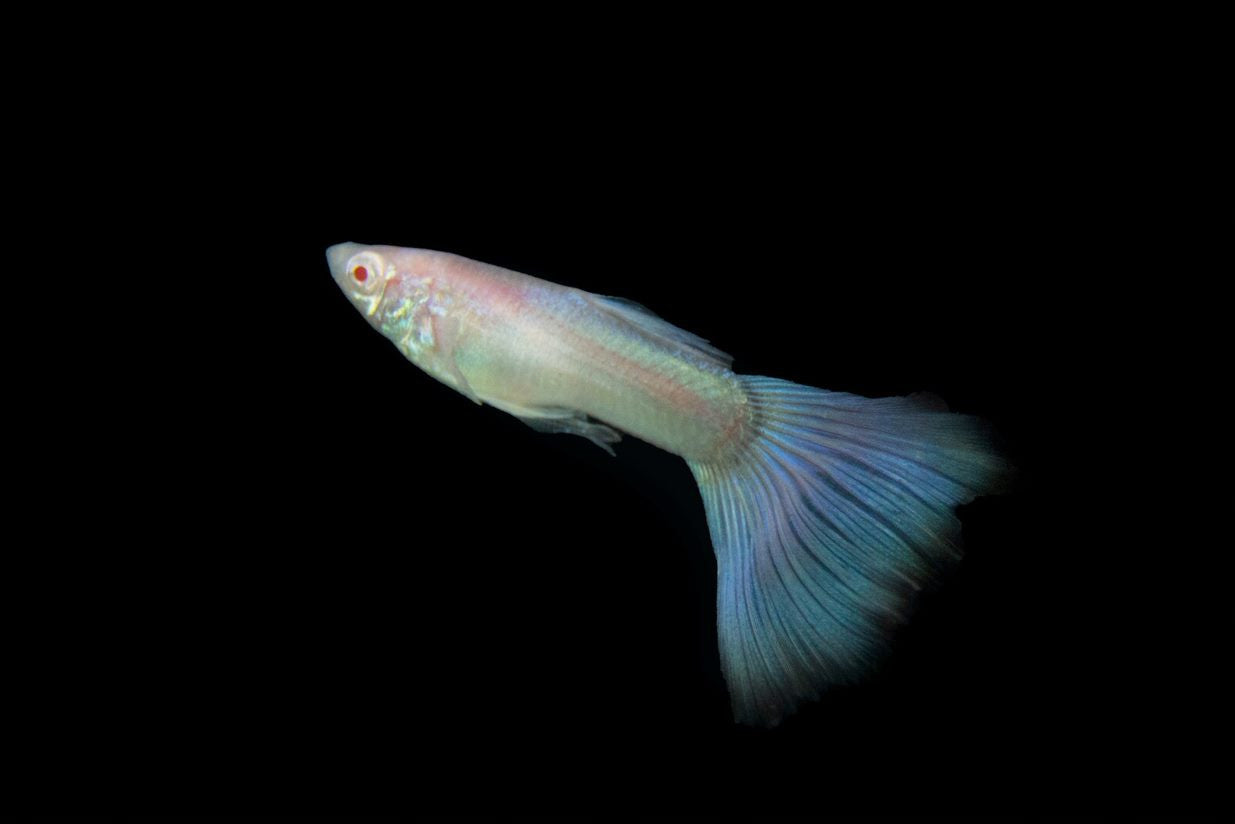
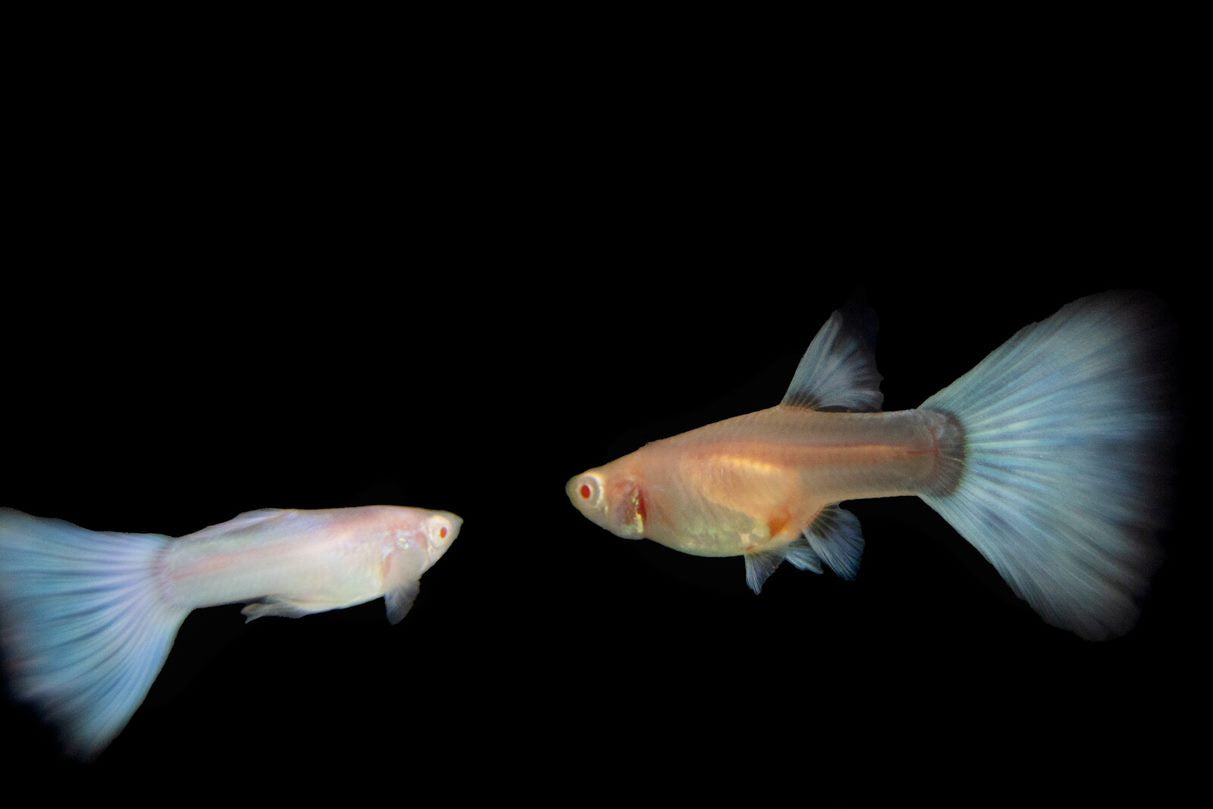
Fancy Guppy fish, also known as rainbow guppies, are small, colorful freshwater fish native to South America. They are popular among aquarium enthusiasts for their vibrant colors and wide range of patterns, which can include spots, stripes, and swirls. In addition to their beautiful appearance, Guppy fish are also known for their hardiness and ease of care, making them a great choice for both beginner and experienced aquarists. These lively fish are also known for their friendly, social nature, and can be kept in community tanks with other non-aggressive fish species. Whether you're looking to add a splash of color to your tank or simply want a low-maintenance pet fish, the Fancy guppies is a great choice.
At Splashy Fish tropical fish store, our Guppies for sale are carefully hand-picked and packed with love to ensure they reach you in the best condition. You can buy guppies online or visit our fish store in Virginia for a wide range of freshwater fish for sale, live plants for sale, and other aquarium supplies.
Visit here for more detailed information about How to Care for Guppy Fish.
Guppy Fish Frequently Asked Questions FAQs
Where do guppy fish come from?
Guppy fish (Poecilia reticulata) originate from South America, specifically from regions such as Guyana, Venezuela, Brazil, and Trinidad and Tobago. They were first discovered in Trinidad in the late 19th century. Guppies are known for their vibrant colors, small size, and adaptability, which have made them popular aquarium fish worldwide.
What guppy fish eat?
Guppy fish are omnivores and eat a variety of foods including commercial fish flakes or pellets, live foods or frozen foods like daphnia, brine shrimp and bloodworms, and occasional vegetables such as blanched spinach or cucumber. Variety and moderation are key to their diet for optimal health and coloration.
How guppy fish give birth?
Guppy fish are livebearers, meaning they give birth to live, free-swimming fry rather than laying eggs. The process of giving birth is called "parturition." Female guppies typically carry developing fry in their bodies for about 4 to 6 weeks, depending on factors such as water temperature and nutrition.
Mastering the Art of Guppy Fish Care: An Advanced Guide to Ensuring the Health and Happiness of your Beloved Pets
Welcome to the ultimate guide for all guppy fish enthusiasts! If you're dedicated to providing the best care possible for your beloved guppy pets, you've come to the right place. In this advanced guide, we'll take you deep into the art of guppy fish care, equipping you with the knowledge and strategies to ensure their health and happiness. Guppies, with their vibrant colors and playful personalities, have captured the hearts of fishkeepers around the world. But taking care of these stunning little creatures requires more than just a bowl of water and some fish food. It requires dedication, understanding, and a commitment to creating the perfect environment for them to thrive. From tank setup and water quality management to nutrition and disease prevention, this comprehensive guide covers everything you need to know to become a guppy fish care expert. Whether you're a beginner looking to enhance your knowledge or an experienced fishkeeper seeking to refine your techniques, this guide is your go-to resource for mastering the art of guppy fish care. So, let's embark on this journey together and ensure the health and happiness of your beloved guppies!
Understanding the Needs of Guppy Fish
Guppies (Poecilia reticulata) or Fancy Guppies are tropical freshwater fish native to South America. They are hardy, adaptable, and known for their stunning colors and ease of breeding. However, to truly master the art of guppy fish care, it's essential to understand their natural habitat and replicate it in the home aquarium.
- Temperature: Guppies thrive in water temperatures between 72°F and 82°F (22°C - 28°C). It's crucial to maintain stable temperatures, as fluctuations can stress your guppies, leading to health issues.
- Water Chemistry: Guppies prefer slightly alkaline water, with a pH range of 6.8 to 7.8. While they can tolerate a range of water conditions, consistency is key to their long-term health.
- Space and Enrichment: Guppies are active swimmers, so they need plenty of space to explore. A minimum of 10 gallons is recommended for a small group, but larger fish tanks allow for better swimming room and water quality stability.
Creating the Perfect Guppy Fish Tank Setup
Choose the Right Tank Size
Guppies may be small, but they need ample space to swim and explore. A 10-gallon tank is considered the minimum size for a small group of guppies (about 3-5 fish), but ideally, aim for a 20-gallon tank or larger, especially if you plan on breeding them. A larger tank provides more stable water parameters and space for the fish to move freely.
Substrate
When it comes to aquarium substrate, guppies aren’t too picky, but choosing the right material enhances the look of the tank and supports plant growth. Fine gravel or sand are popular options for guppy tanks. If you plan on having live plants, a nutrient-rich plant substrate is a better choice as it helps support root development and plant growth. The color of the substrate can also be selected to complement the vibrant hues of your guppies.
Filtration
Guppies thrive in clean, well-oxygenated water, so installing a quality filtration system is essential. Sponge filters are often recommended for guppy tanks as they provide gentle filtration, which is ideal for small fish and fry. Hang-on-back (HOB) filters and canister filters are also excellent choices, as they maintain water quality by removing debris, excess nutrients, and toxins.
Make sure the filter is rated for your tank size and does not create a strong current, as guppies prefer gentle water flow.
Lighting
Standard aquarium lighting works well for guppies, but if you’re keeping live plants, opt for full-spectrum lights that support plant growth. Guppies don’t require intense light, but a well-lit environment helps showcase their colors.
Aquascape Decorations
Aquascaping is the art of designing a visually appealing underwater landscape in your aquarium. Guppies love exploring their environment, so incorporating decorations in your tank not only creates an aesthetic appeal but also provides shelter and hiding spots for them to feel safe. Here are some aquarium decoration ideas for a guppy tank:
Driftwood
Aquarium driftwood adds a natural touch to your fish tank and gives your guppies places to swim around and explore. It’s also great for attaching plants like Java Fern and Anubias. Be sure to soak driftwood before adding it to your tank to prevent tannin release that could discolor the water.
Rocks and Stone Structures
Adding aquarium rocks can create an appealing natural look. Choose smooth, fish-safe rocks like slate or lava rock, which are ideal for creating hiding places and caves for guppies. Stack them to form different levels and caves, where guppies can retreat for privacy or shelter, especially for female guppies when they are giving birth.
Aquarium Caves
Fish caves or hollowed-out ornaments serve as excellent hiding places for guppies and fry. They come in various designs and sizes, allowing you to match the aesthetic of your aquascape. Caves give guppies a sense of security and reduce stress levels, improving their overall health.
Maintaining Water Quality for Guppy Fish
Water quality is critical to guppy care. Poor water conditions can lead to stress, disease, and shortened lifespans. Here are key factors to keep in check:
Ammonia, Nitrite, and Nitrate
Regular water testing is essential to monitor the nitrogen cycle. Ammonia and nitrite should be at 0 ppm, while nitrate levels should remain under 20 ppm. Perform partial water changes (20-30%) weekly to keep toxins in check. Using a reliable water tester is the best way to regularly check the water quality.
pH Stability
Maintaining a stable pH between 6.8 and 7.8 is important. Sudden changes in pH can cause stress, leading to health issues.
Water Hardness
Guppies prefer slightly hard water. Aim for a hardness level between 8 and 12 dGH to mimic their natural environment.
Heater and Thermometer
Guppies are tropical fish and require a stable water temperature between 72°F to 82°F (22°C to 28°C). A reliable aquarium heater is essential to maintain this temperature range. Use a thermometer to monitor the water temperature and ensure it remains consistent, especially in cooler climates.
Feeding and Nutrition for Guppy Fish
Nutrition plays a major role in the overall health and vibrancy of guppies. To ensure a balanced diet, offer a variety of fish foods.
- Staple Diet: High-quality guppy flakes or pellets should be the foundation of their diet. Look for food rich in protein and vitamins.
- Live and Frozen Foods: Guppies love live or frozen foods like brine shrimp, daphnia, and bloodworms. These foods are high in protein and enhance coloration.
- Vegetable Matter: Guppies are omnivores and benefit from vegetable matter in their diet. Blanched peas, spinach, or algae wafers provide essential nutrients and promote digestion.
- Feeding Frequency: Feed adult guppies in small amounts 2-3 times a day. Overfeeding can lead to poor water quality, so only provide what they can consume in a couple of minutes.
Guppy Fish Breeding and Reproduction
Breeding guppies is straightforward, and many hobbyists get involved in it. With the right conditions, guppies will breed frequently, as they are livebearers.
- Mating: Male guppies have a gonopodium, a specialized fin used for fertilization. After mating, female guppies can store sperm and give birth multiple times without further contact with a male.
- Gestation Period: Female guppies are pregnant for about 21-30 days. Look for signs of pregnancy, such as a swollen belly and a dark gravid spot near the anal vent.
- Fry Care: Guppy fry are born live and are immediately self-sufficient. If you want to increase fry survival rates, use a breeding box or dense plants like Java moss to give fry a place to hide from adult guppies, who may eat them.
- Selective Breeding: Advanced hobbyists can focus on selective breeding to enhance desirable traits like color patterns and fin shapes.
Tank Mates and Compatibility for Guppy Fish
Best Tank Mates
Choosing the right tank mates for guppies is crucial for maintaining a peaceful and harmonious aquarium. Since guppies are small, peaceful fish, they do best with other non-aggressive species. Here are some excellent tank mate options:
Cardinal Tetras
Cardinal tetras are small, vibrant, and peaceful, making them perfect companions for guppies. These Tetras thrive in similar water conditions and are easy to care for. Keeping them in schools of at least 6 will allow them to display their natural schooling behavior.
Harlequin Rasboras
Harlequin rasboras are another peaceful schooling fish that make excellent tank mates for guppies. Their shimmering bodies and active nature bring life to the aquarium without causing any conflict.
Corydoras Catfish
These bottom-dwelling fish are peaceful and will not compete with guppies for space or food. Corydoras also helps keep the tank clean by scavenging leftover food, which can contribute to better water quality.
Mollies
Mollies are livebearers like guppies, making them compatible in terms of behavior and habitat preferences. They come in a variety of colors and are hardy fish that can tolerate a wide range of water parameters.
Platies
Similar to guppies in temperament, Platies are friendly and peaceful. They thrive in the same water conditions and are also livebearers, so they make great additions to a guppy tank.
Otocinclus Catfish
Also known as "Otos," these tiny algae-eating fish are peaceful and stay out of the way of guppies. They are excellent at controlling algae growth and will keep your tank clean without disturbing the guppies.
Dwarf Gourami
If you're looking for a more unique tank mate, the Gourami is a good option. While they are slightly larger, their peaceful nature and stunning colors make them a compatible and beautiful addition to a guppy tank.
Cherry Shrimp or Amano Shrimp
Freshwater shrimp are great for cleaning the tank, especially when it comes to algae and leftover food. Both Cherry shrimp and Amano shrimp are peaceful and won’t compete with guppies, and they add an interesting dynamic to the tank.
Bristlenose Pleco
A Bristlenose pleco is an excellent algae eater, and its peaceful nature makes it a good fit for a guppy tank. Be sure to provide hiding spots, as they like to retreat during the day.
Tank Mates to Avoid
Not all live fish are compatible with guppies. Aggressive or fin-nipping species can cause stress or physical harm to your guppies. Avoid the following:
Tiger Barbs
Known for their aggressive behavior and tendency to nip at fins.
Cichlids
Many cichlid species, such as Angelfish, can be territorial and aggressive.
Betta Fish
While they are beautiful, male bettas can be aggressive toward guppies, especially if they mistake them for rivals due to their colorful fins.
Live Freshwater Plants for Guppy Fish Tank
Benefits of Live Plants in a Guppy Tank
- Improved Water Quality: Live plants help absorb excess nutrients like nitrates and ammonia, which improves overall water quality and reduces the frequency of water changes.
- Oxygen Production: Plants produce oxygen during the day, which helps keep the water well-oxygenated and provides a healthier environment for guppies.
- Natural Hiding Spots: Guppies and their fry use aquatic plants as hiding spots to reduce stress and feel secure, which can improve their overall health and reduce aggressive behavior.
- Reduced Algae Growth: By absorbing excess nutrients, live plants help limit algae growth, keeping the tank cleaner and reducing maintenance.
- Aesthetic Appeal: Live plants create a lush, natural look that enhances the beauty of your aquarium and creates a more visually stimulating environment for both you and your guppies.
Best Aquatic Plants for Guppy Fish
Adding live plants to your guppy tank not only beautifies the space but also improves water quality by absorbing nitrates and providing oxygen. Guppies love plants as they offer hiding spaces, which reduce stress and offer shelter for fry. Here are some excellent plant options for guppy tanks:
Java Fern
Java fern is one of the most popular plants for guppy tanks due to its low maintenance requirements. It grows well in low to moderate light, and its broad leaves provide great cover for guppies. Java fern doesn’t need to be planted in the substrate and can be attached to rocks or driftwood.
Anubias
Anubias is another hardy plant that does well in guppy tanks. Like Java fern, it can be attached to hard surfaces and doesn’t require strong lighting. Its thick, sturdy leaves create an ideal place for guppies to swim around and explore.
Vallisneria
Vallisneria grows quickly and tall, creating a jungle-like environment in the tank. Guppies enjoy swimming between its tall, grassy leaves and fry use it as shelter. Vallisneria also helps oxygenate the water and can thrive in a wide range of water conditions.
Java Moss
Java moss is a versatile and easy-to-grow plant that provides excellent cover for guppy fry. It grows into a dense mat, which is perfect for guppies to hide and forage for food. Java moss thrives in low light and doesn’t need any special care, making it ideal for beginners and experienced aquarists alike.
Amazon Sword
The Amazon sword is a large, striking plant that creates a beautiful centerpiece for any guppy tank. It grows best in nutrient-rich substrate and moderate to high light. This Sword plant provides excellent coverage and helps maintain water quality by absorbing nutrients.
Cryptocoryne
Cryptocorynes are slow-growing plants with long, wavy leaves. They thrive in low to medium light and require minimal care. These plants are perfect for adding depth and variation to your tank, and guppies will enjoy swimming through their leaves.
Common Diseases and Health Issues in Guppy Fish
Even with the best care, guppies can still fall ill. Knowing the signs of common diseases and how to prevent them is key.
Ich (White Spot Disease)
This parasite manifests as white spots on the body and fins. It is often caused by stress or poor water conditions. Treat with medication and raise the tank temperature gradually to 82°F to speed up the parasite’s life cycle.
Fin Rot
Fin rot is caused by bacterial infections, often due to poor water quality. Maintaining pristine water conditions and using antibiotics can treat this condition.
Dropsy
A serious condition, dropsy causes the body to swell and is usually a symptom of organ failure. Unfortunately, dropsy is often fatal, but it can be prevented by maintaining optimal water conditions and a proper diet.
Tips for Keeping Guppy Fish Happy and Stress-free
- Avoid Overcrowding: Overcrowded tanks lead to stress, competition for resources, and increased waste production. Stick to the recommended stocking guidelines of 1 guppy per 2 gallons of water.
- Provide Plenty of Hiding Spots: Plants, decorations, and caves give guppies places to retreat when they feel threatened or need to rest.
- Stable Environment: Sudden changes in temperature, pH, or water hardness can cause stress. Maintain consistency through regular water changes and monitoring water parameters.
- Social Interaction: Guppies are social fish and thrive in groups. Keeping them in small schools of at least 5-6 guppies encourages natural behaviors and reduces stress.
Advanced Techniques for Enhancing the Appearance of Guppy Fish
Experienced guppy keepers often aim to enhance the natural beauty of their fish through selective breeding, diet, and tank conditions.
- Color Enhancing Foods: Feed guppies color-enhancing foods rich in carotenoids and spirulina to bring out their vibrant hues.
- Lighting: Moderate to low lighting enhances the natural iridescence of guppies. Avoid overly bright lighting, which can wash out their colors.
- Selective Breeding: For serious hobbyists, selective breeding to enhance specific traits, such as tail shape, fin size, or color patterns, can produce stunning results.
Conclusion
Mastering the art of guppy fish care requires dedication, knowledge, and attention to detail. By providing your guppies with a well-maintained tank, a balanced diet, and proper care, you'll ensure their health and happiness. With the tips and advanced techniques outlined in this guide, you're well on your way to becoming a guppy care expert.




















